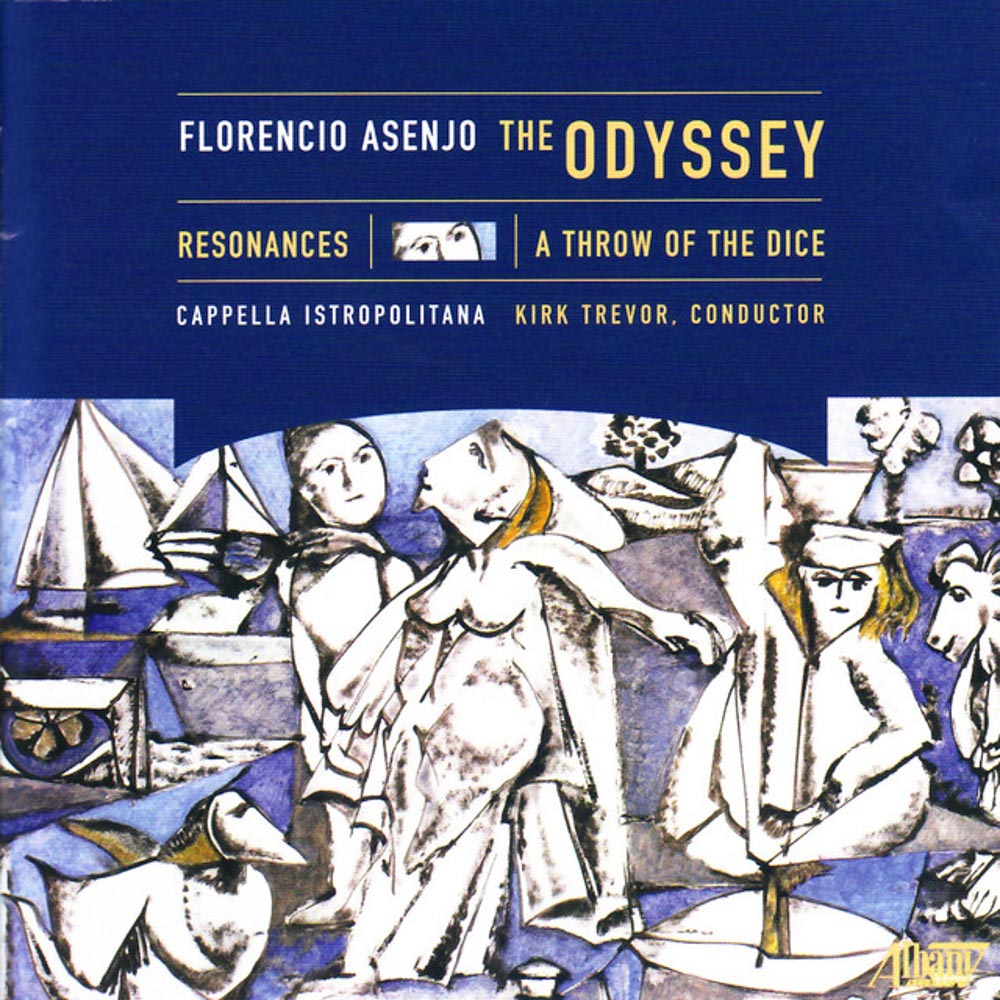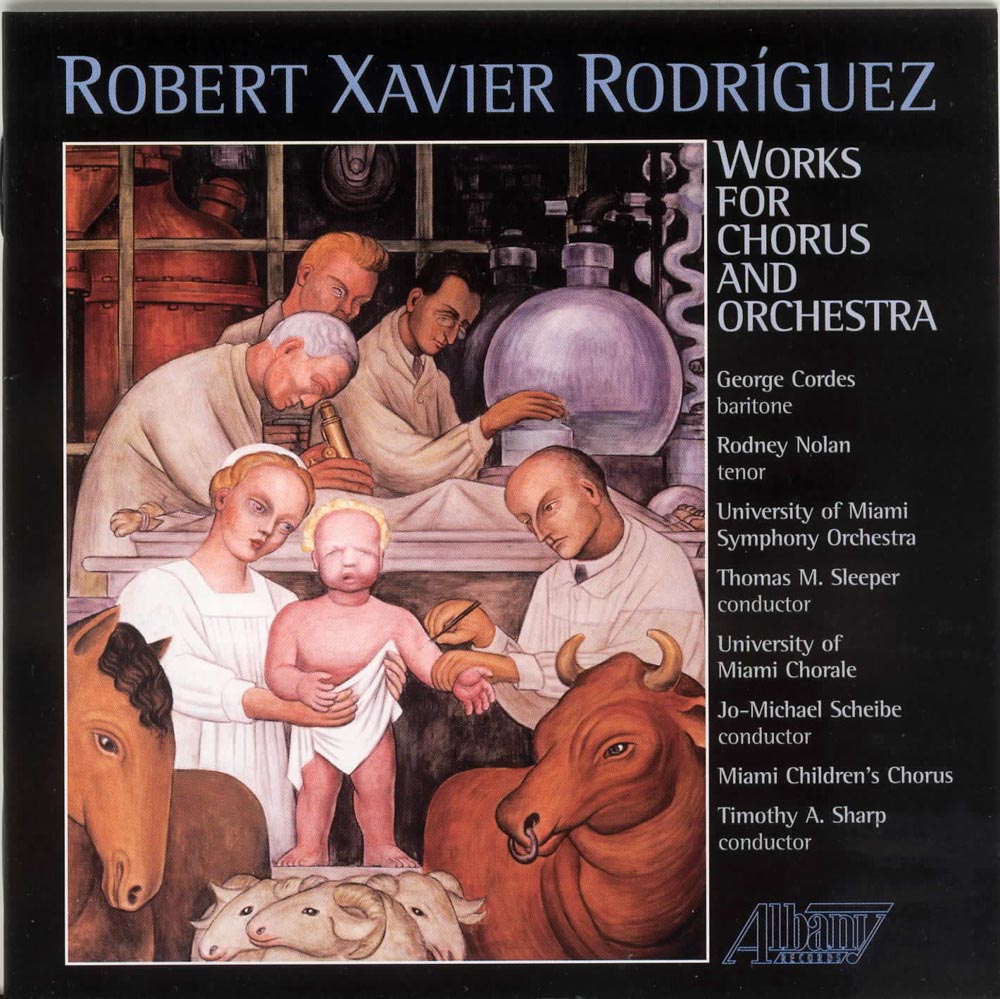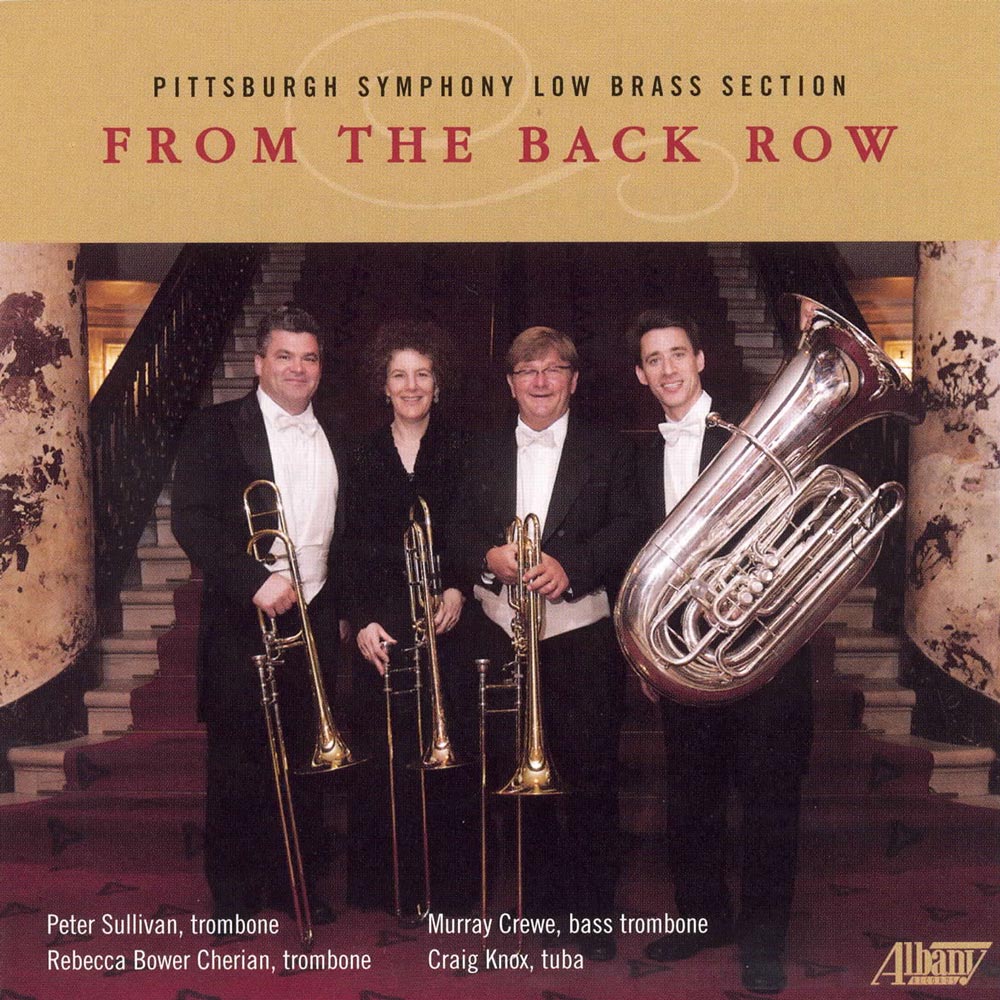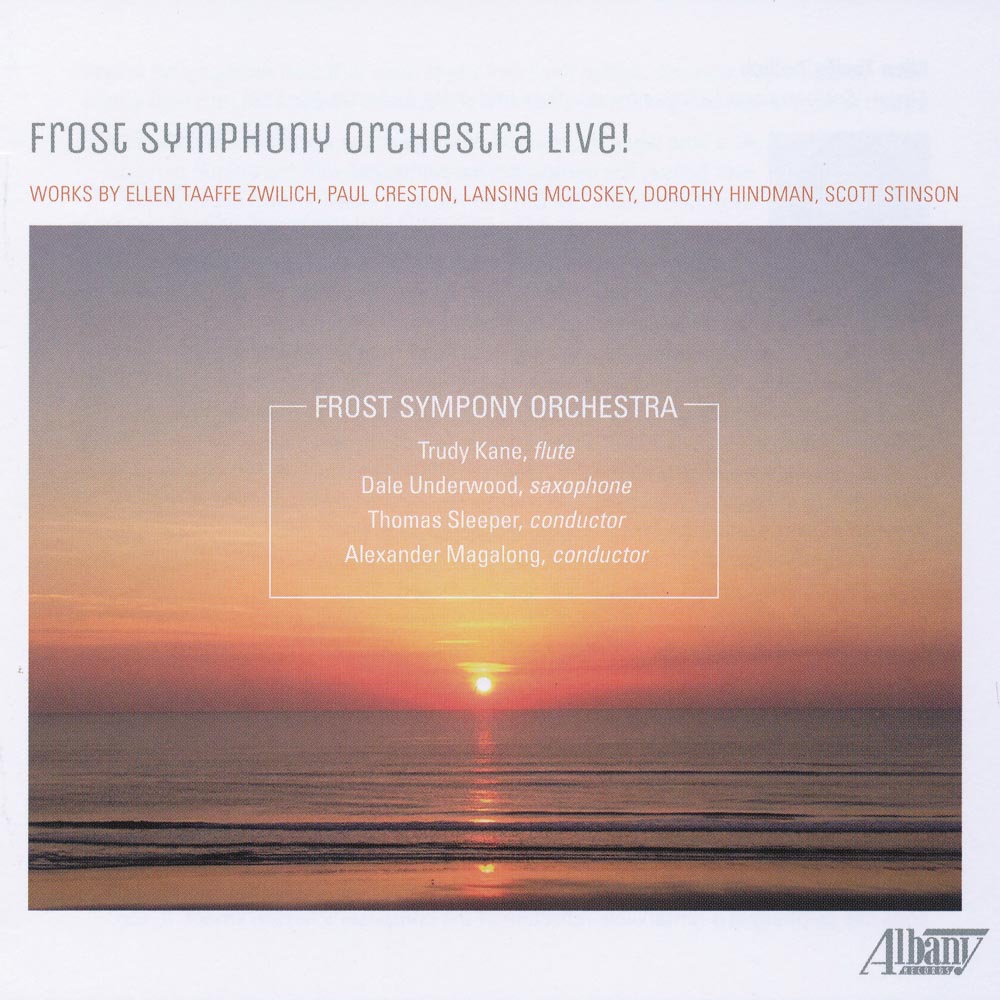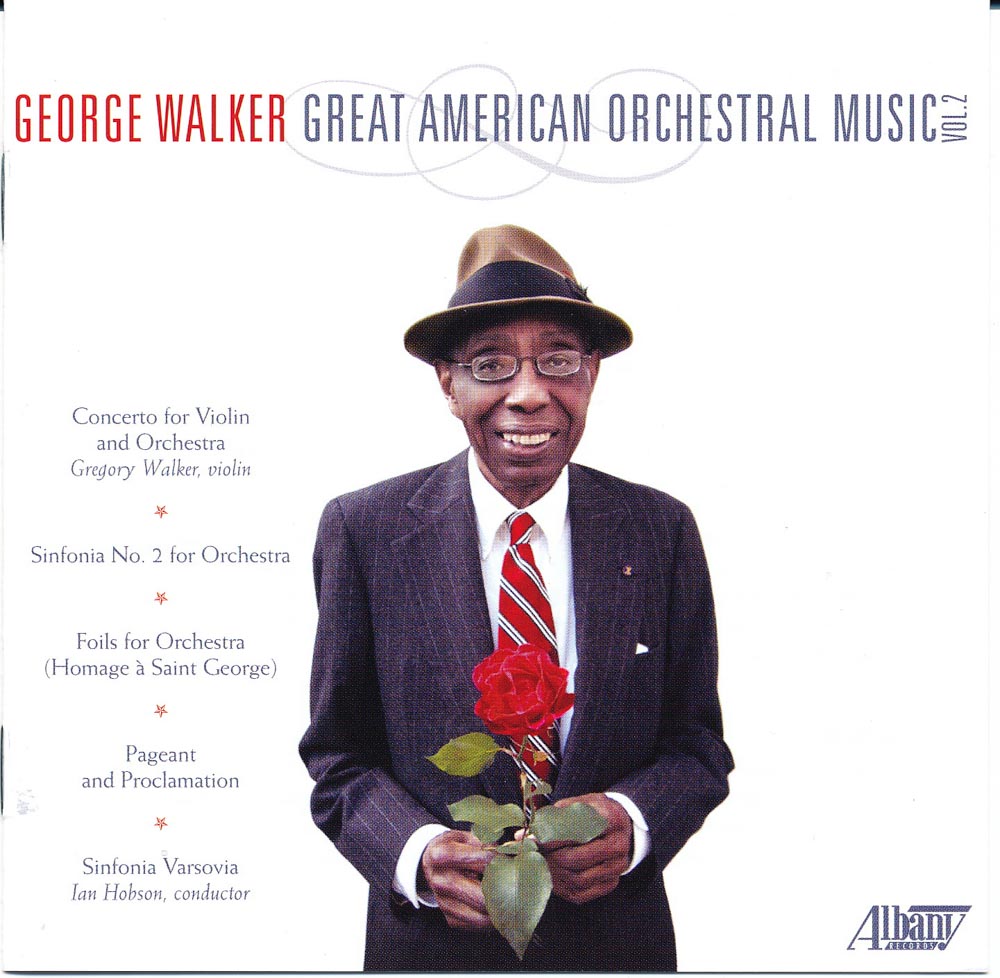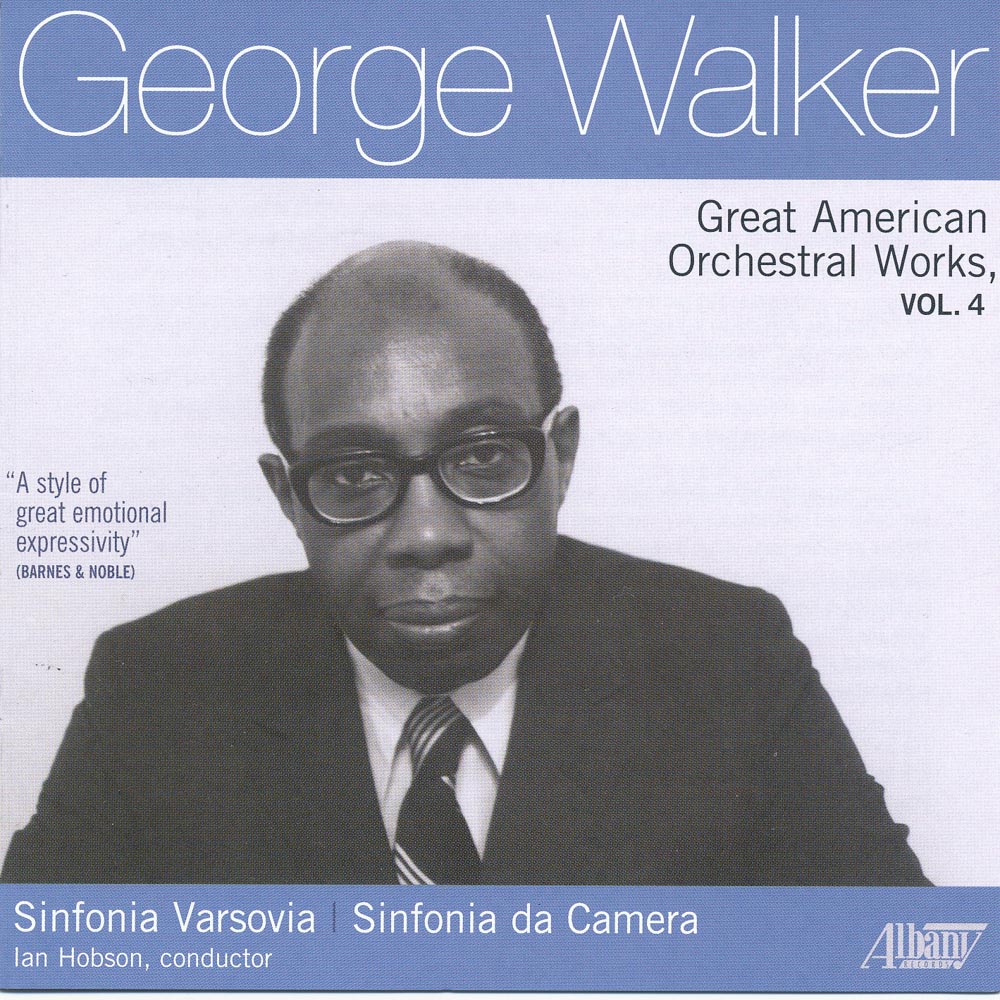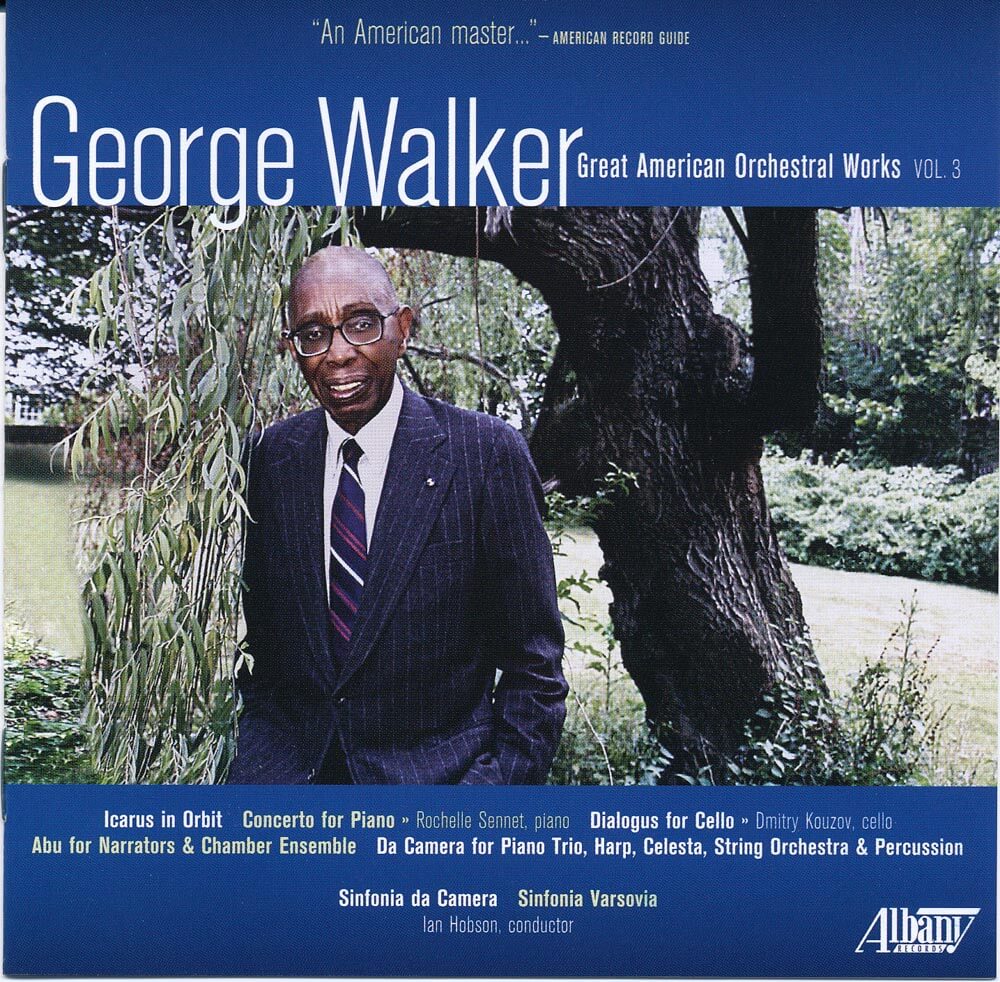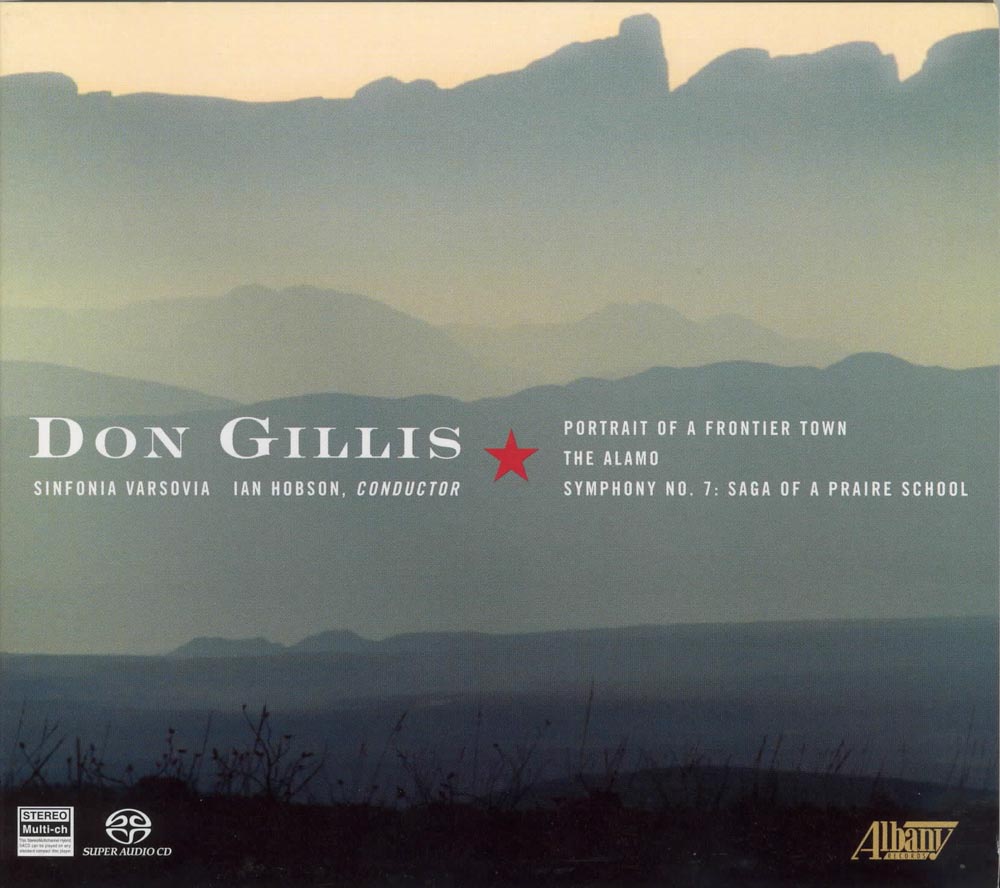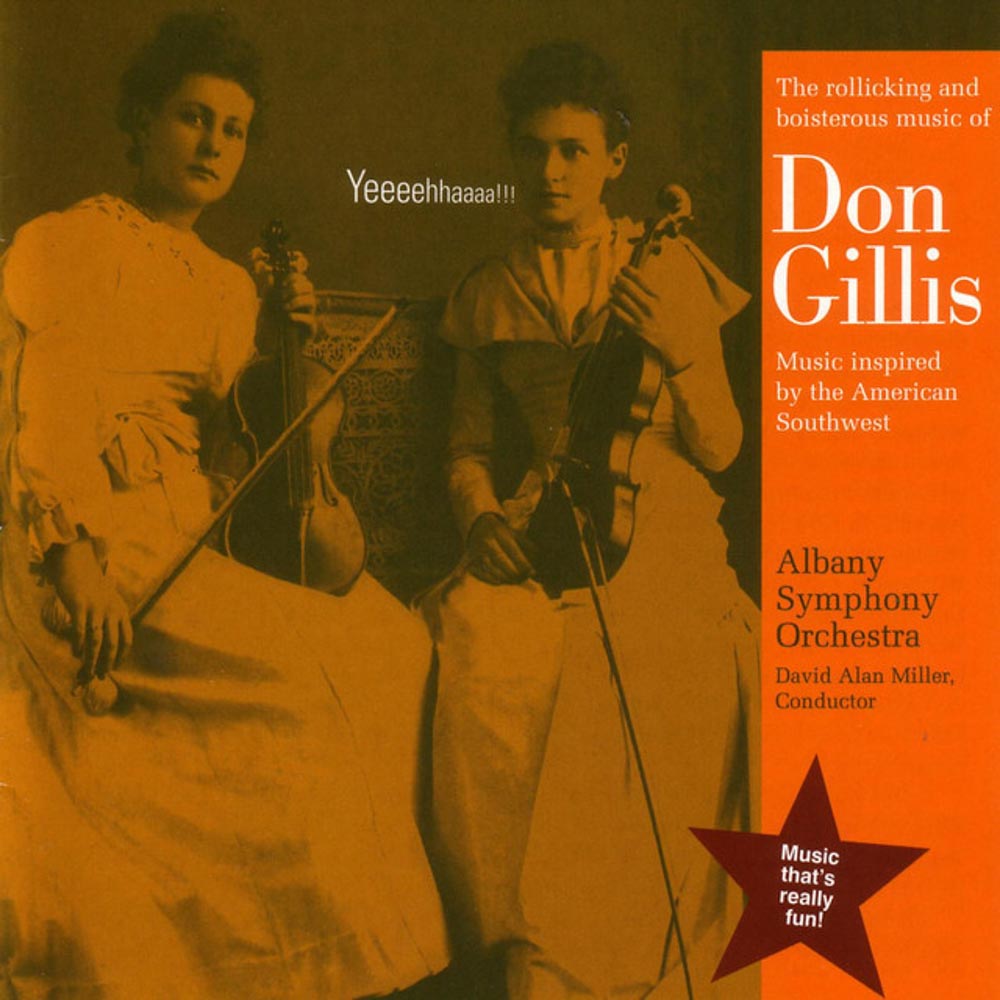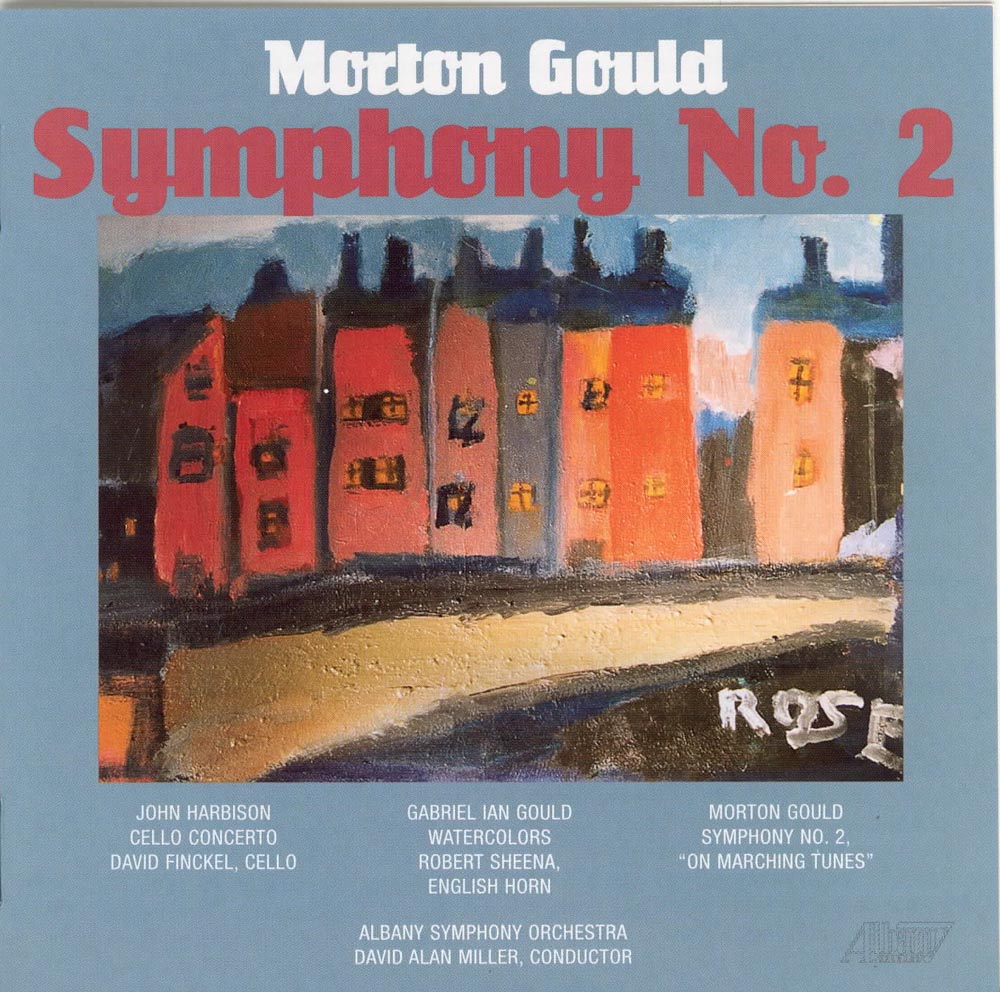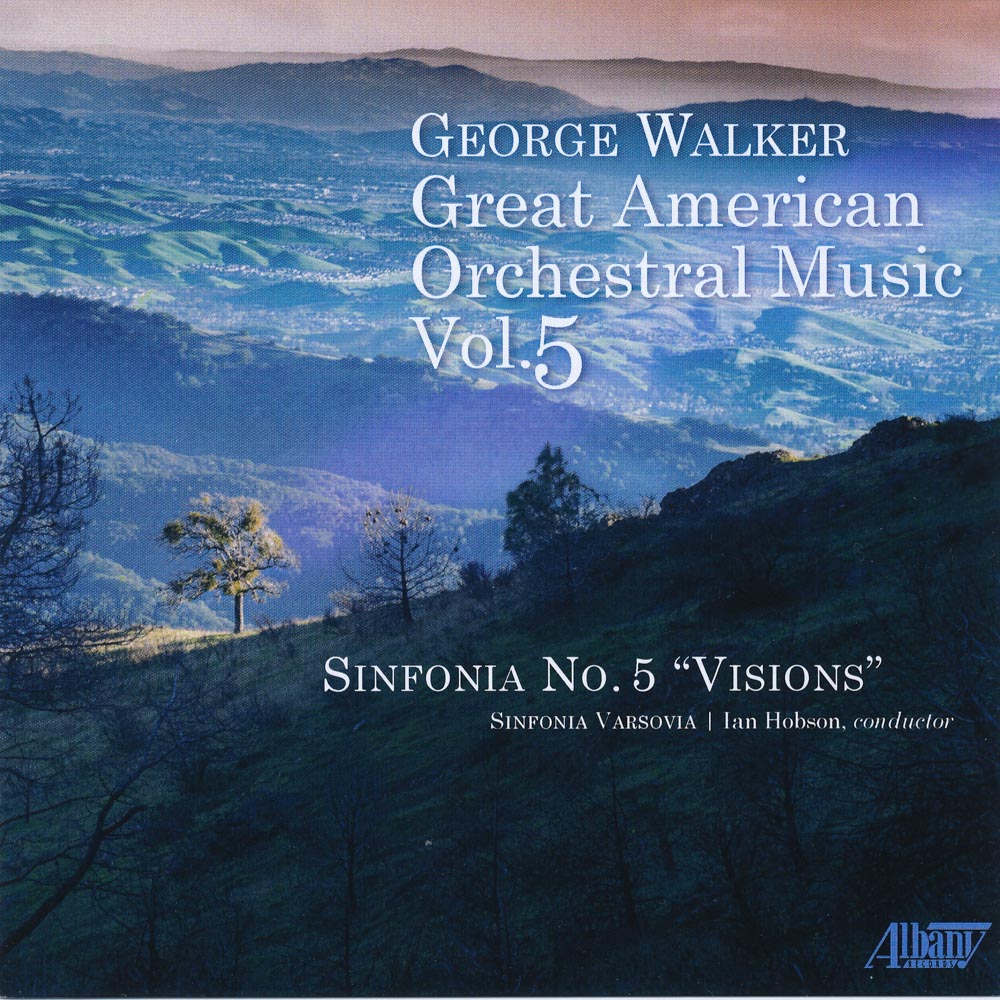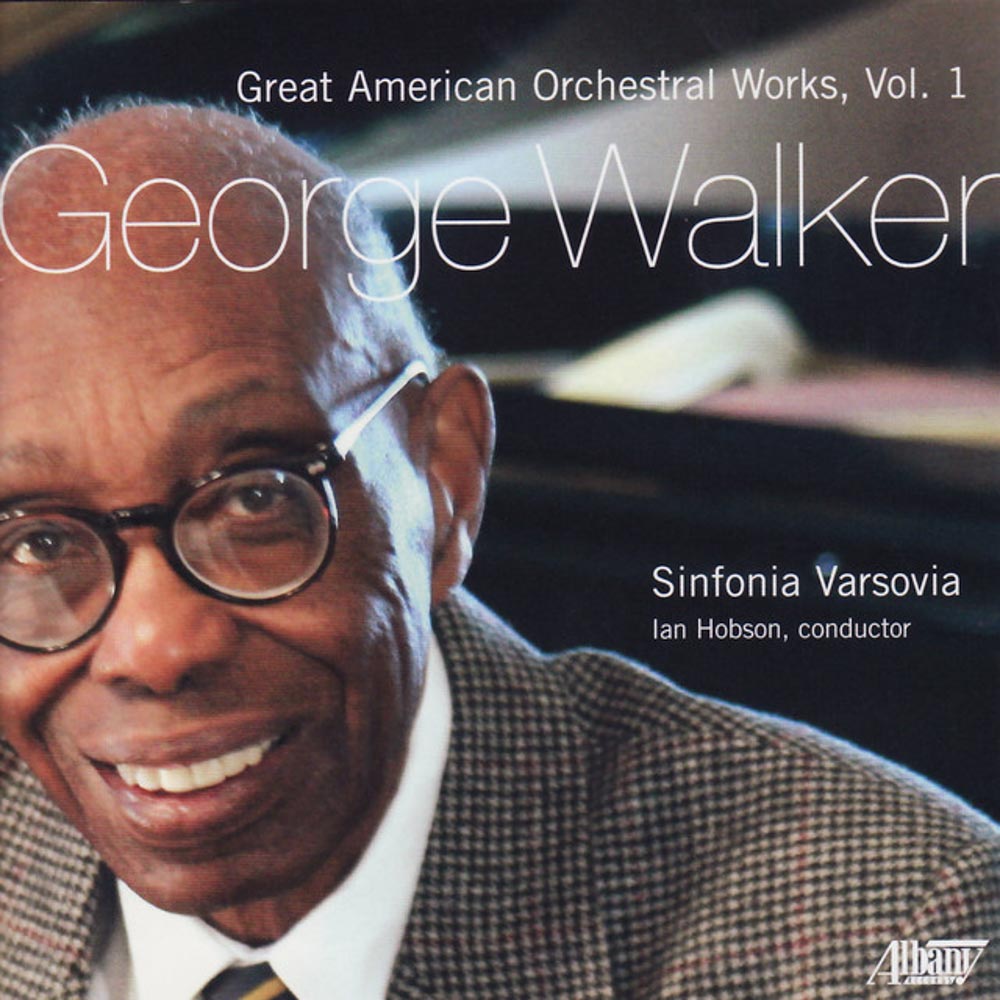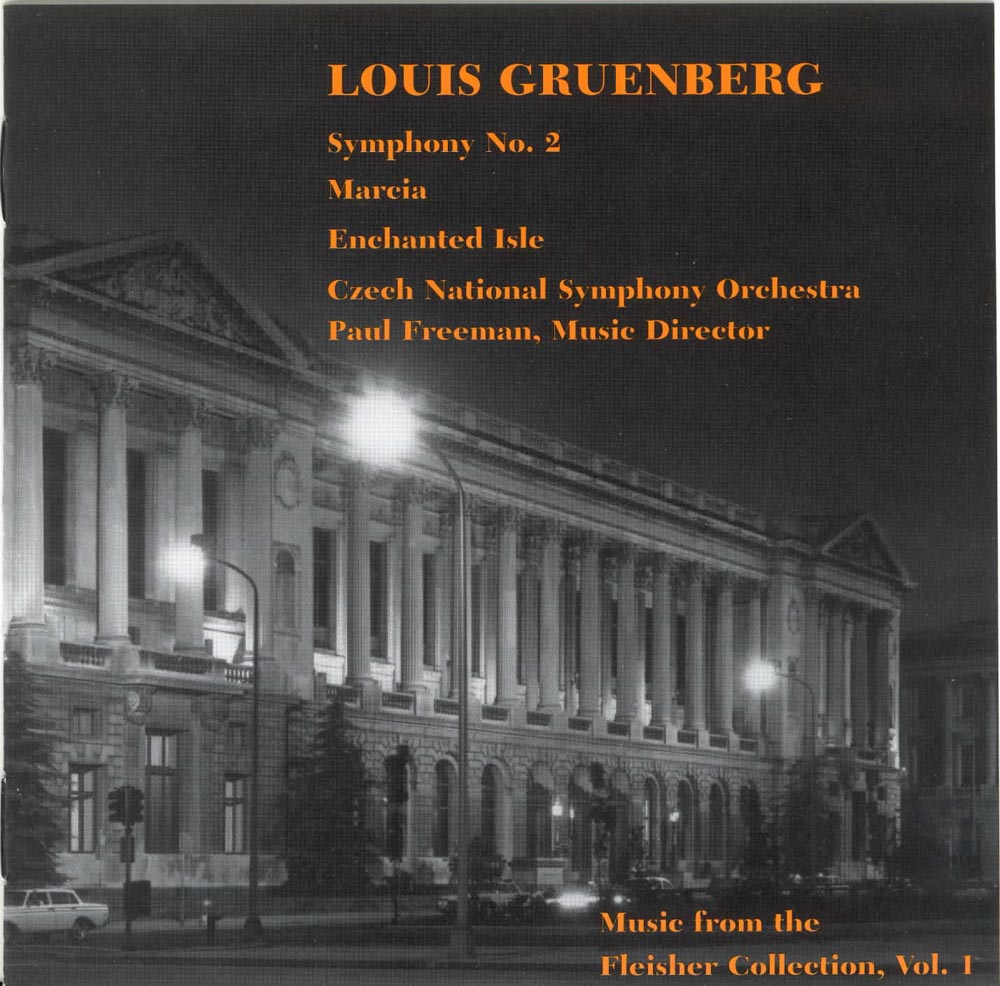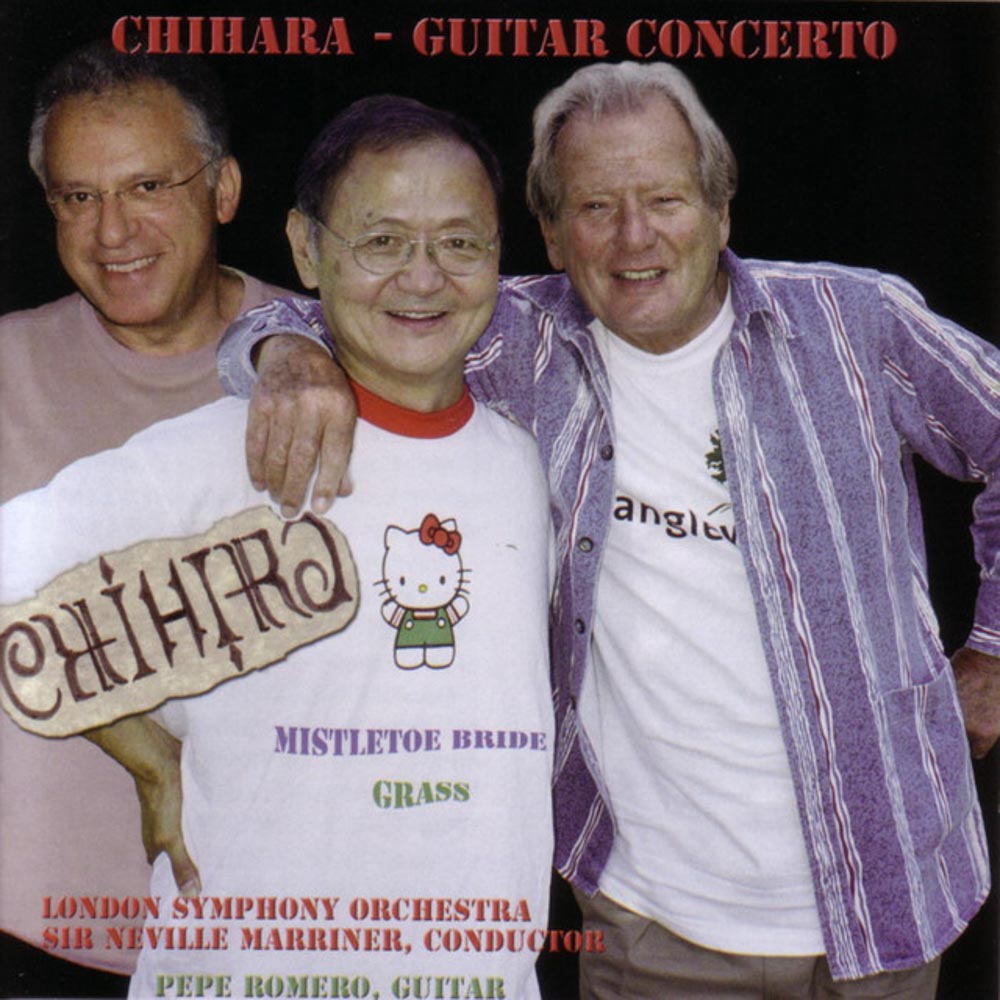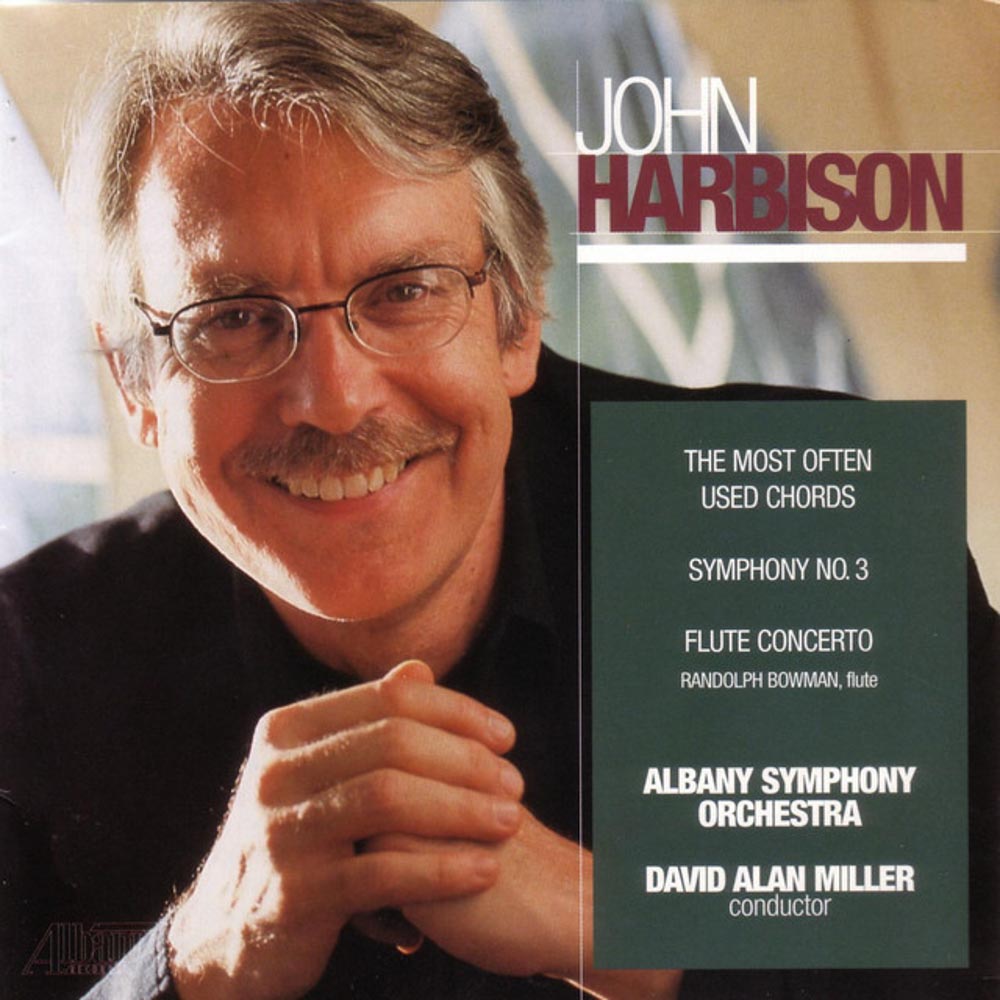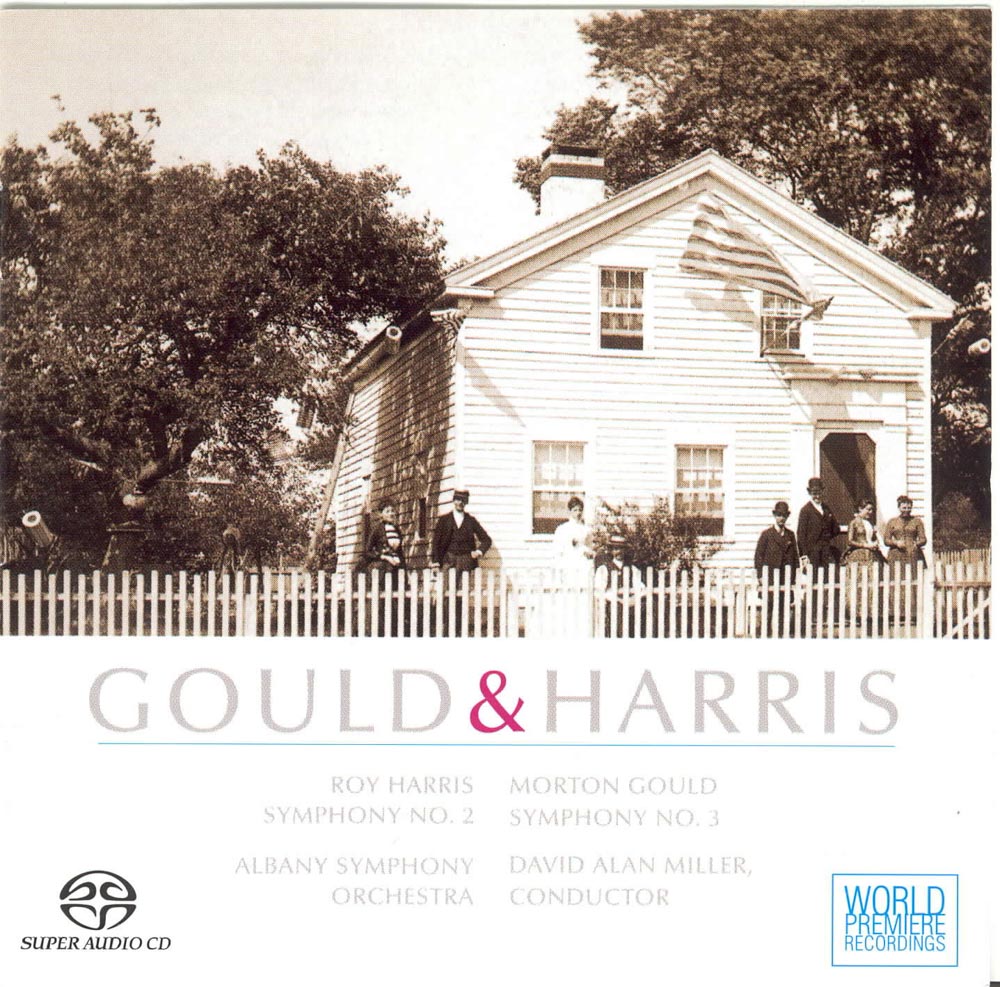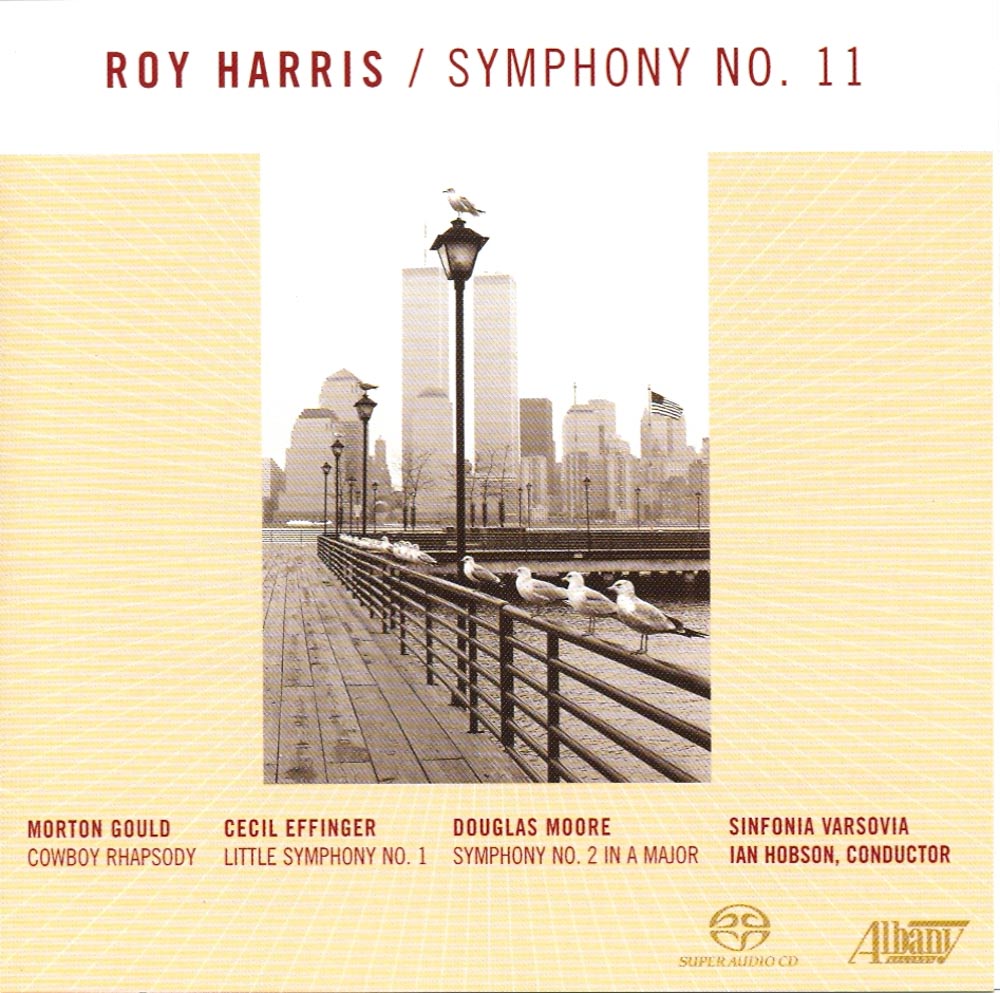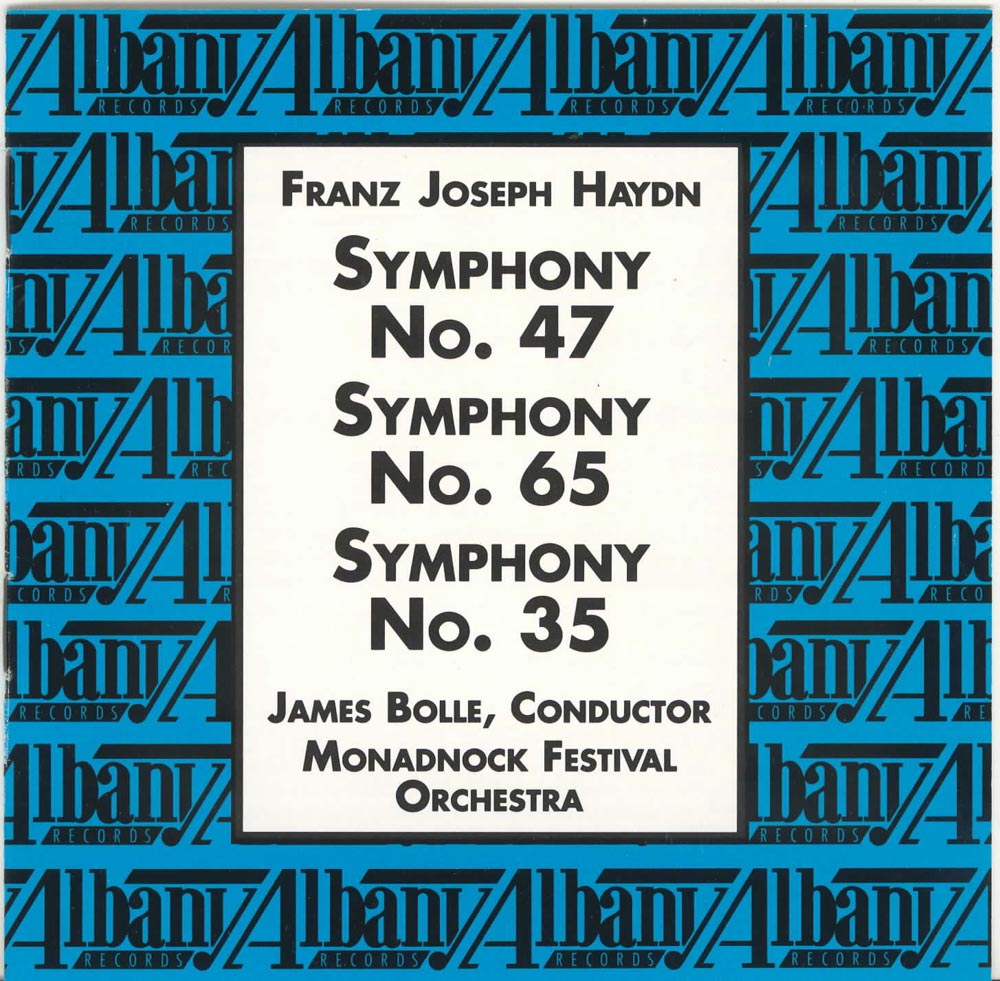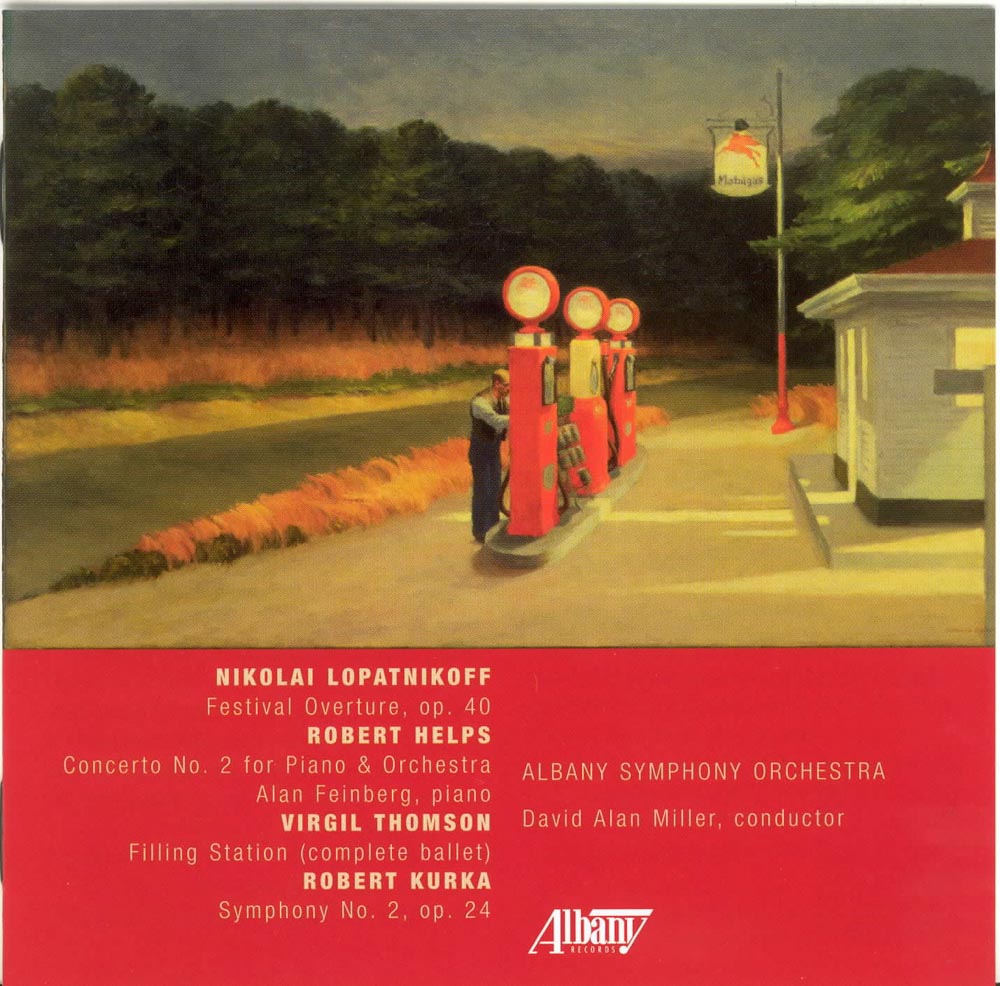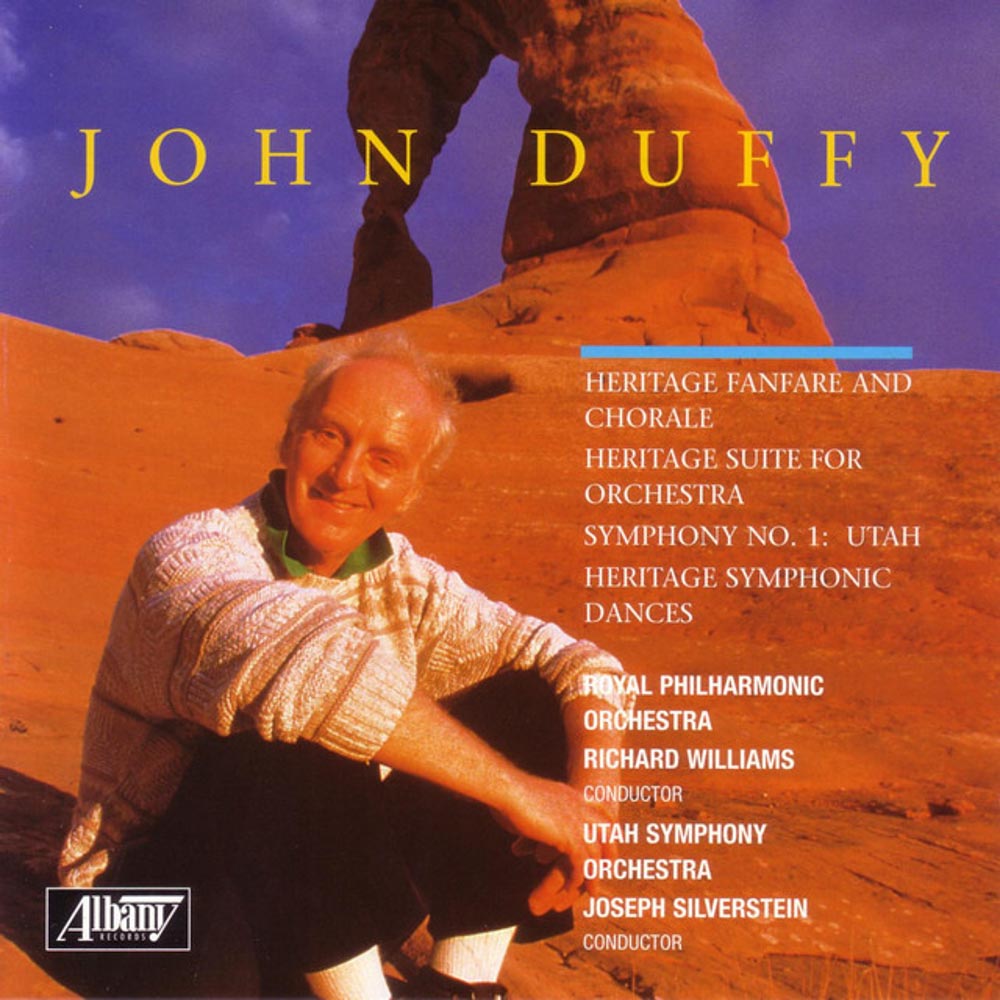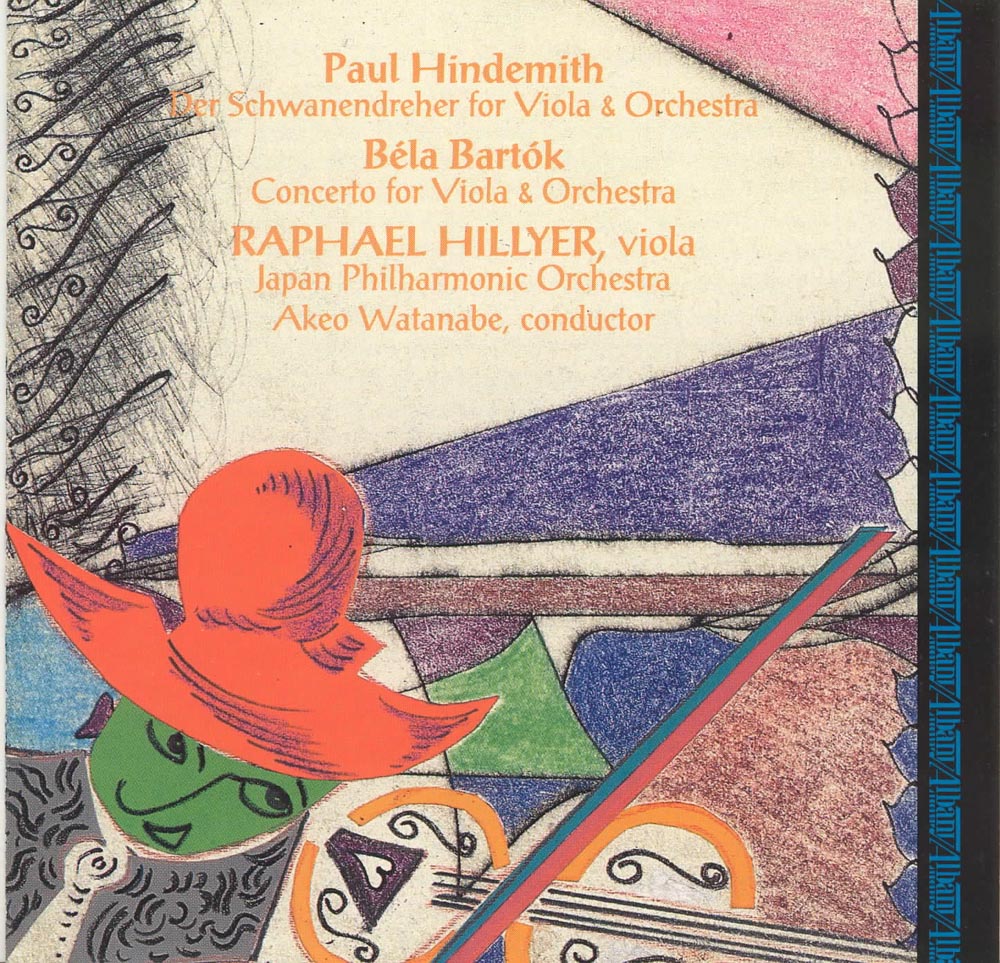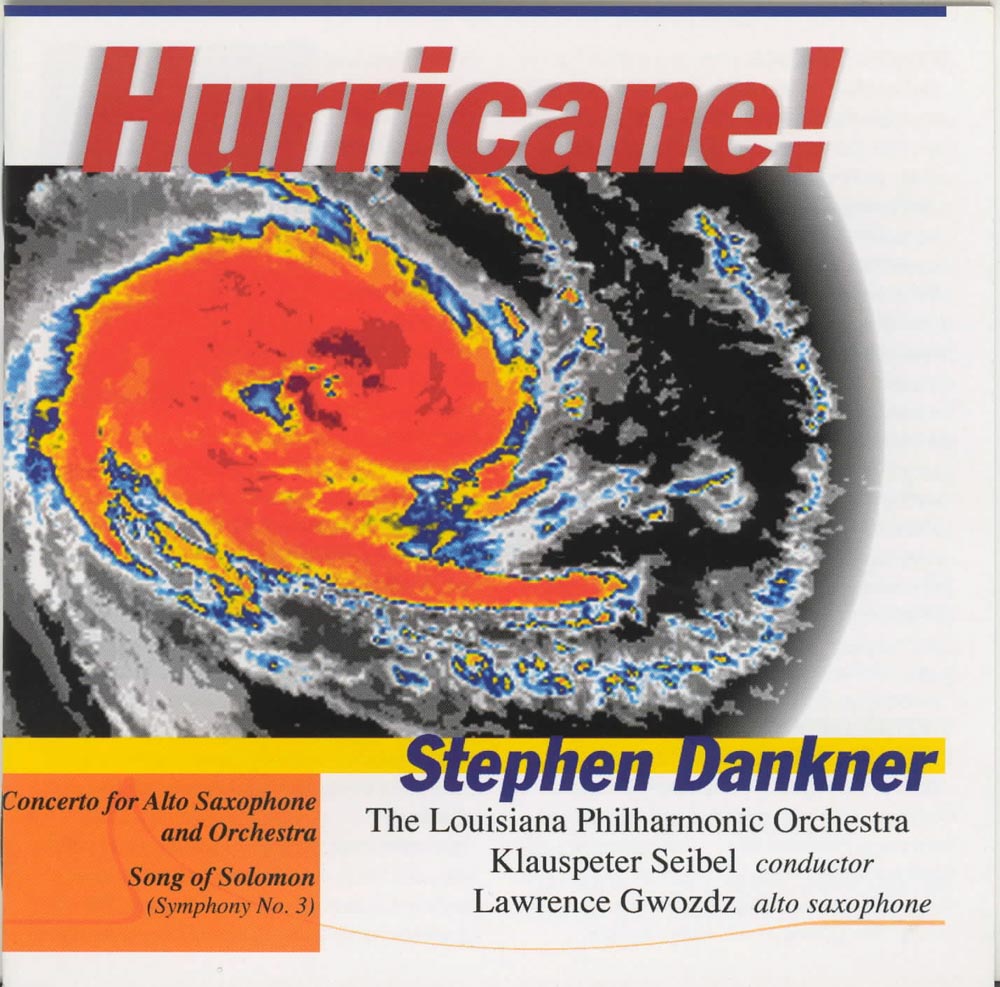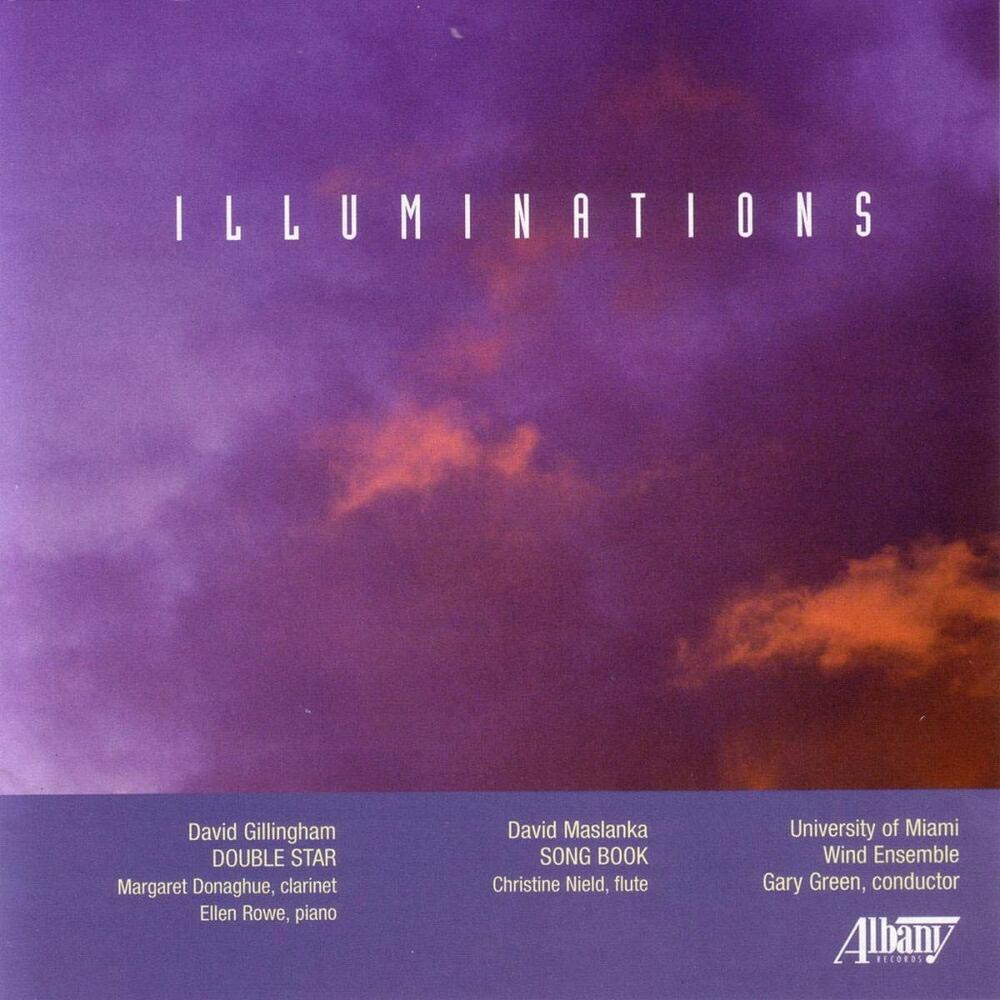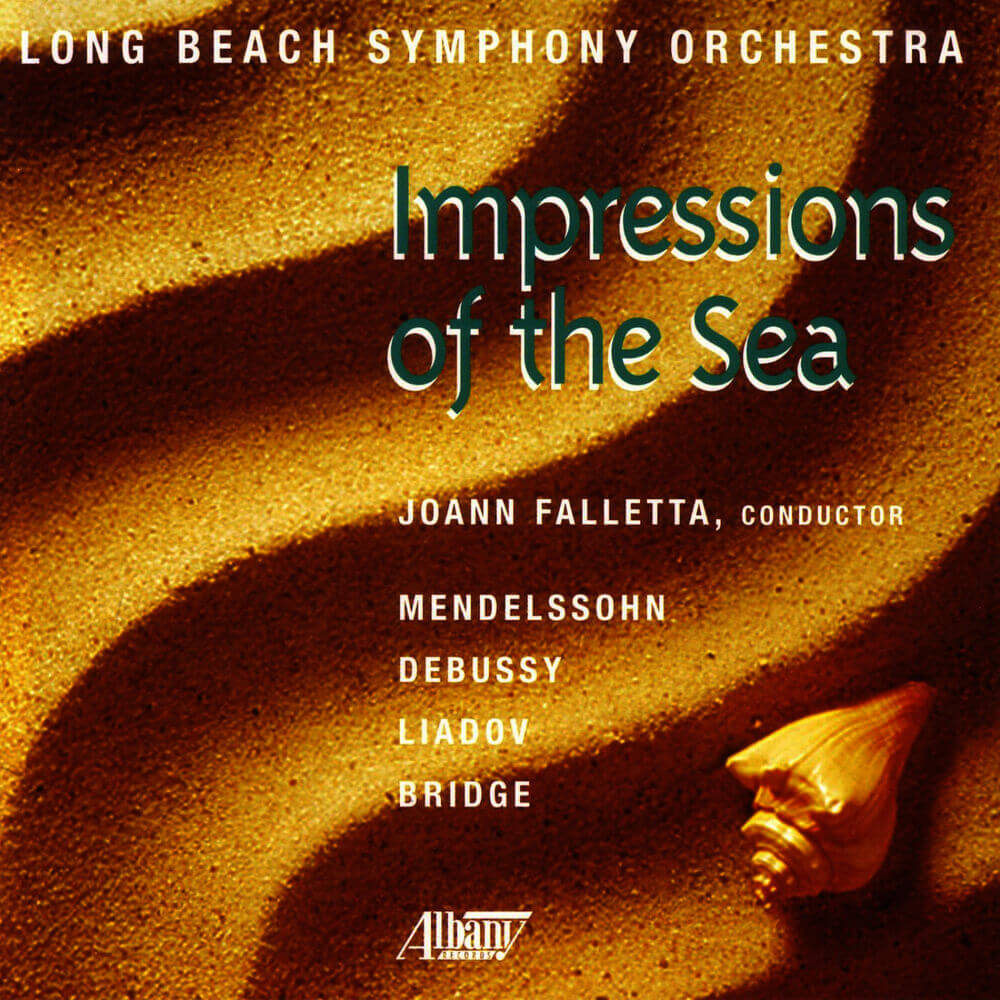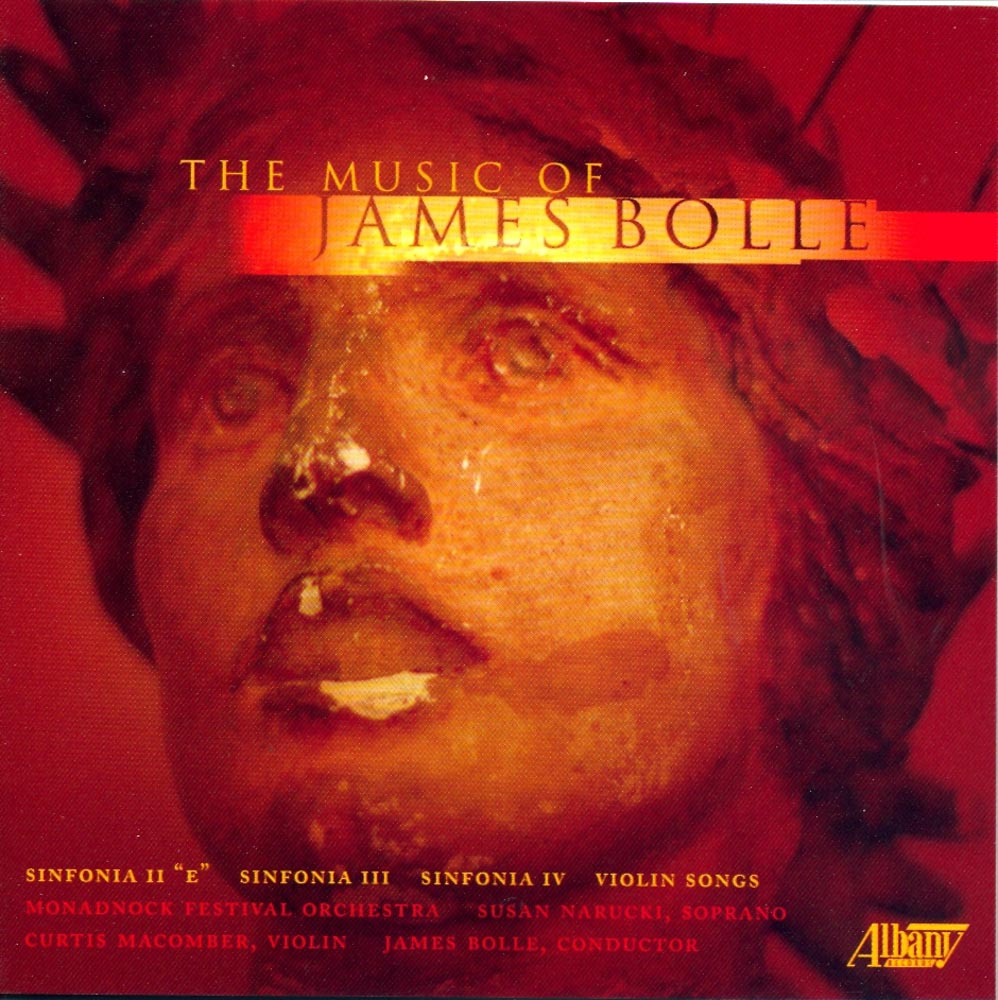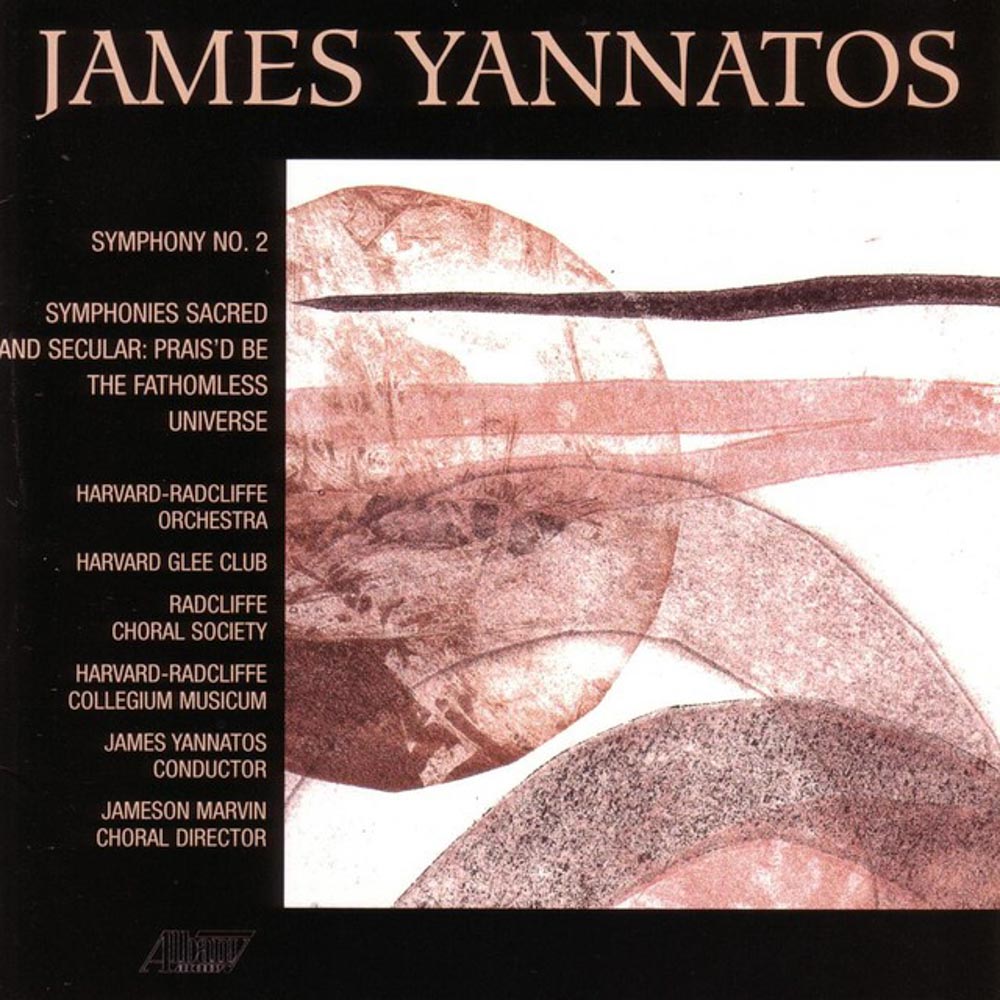Catalog #: TROY1019
Release Date: April 1, 2008OrchestralFlorencio Asenjo was born in Buenos Aires, Argentina. He is best known for his approach to composing called "maximalism," the objective of which was to achieve a high density of content in constant change: he decided to base his composing on the creation of sequences of themes that, taken in succession, were each a development of the preceding music. Again, this was not to be a formal development, or a variation on previous themes, but the creation of entirely new themes connected aesthetically to the preceding ones, a development of substance rather than of form, just as the various characters in a play do not repeat the same sentences over and over again except for special purposes; rather, each rejoins the preceding dialogue to take it further, while retaining the continuity of meaning and atmosphere. But please note: the result is not an avant-garde exercise. This is very colorful music, full of rich atmosphere and drama, upholding the traditions started by his fellow countrymen, such as Alberto Ginastera.
Catalog #: TROY0430
Release Date: June 1, 2001OrchestralRobert Xavier Rodriguez is one of the most significant and often-performed American composers of his generation. His teachers have included Nadia Boulanger, Jacob Druckman, Bruno Maderna and Elliott Carter. His Forbidden Fire, Cantata for the Next Millennium is scored for bass-baritone, double chorus and orchestra. The work was commissioned by the University of Miami School of Music and received its world premiere on October 17, 1998. Conceived as a companion piece to Beethoven's Symphony No. 9, it is a 22 minute exploration of dangerous or forbidden knowledge, as represented by the Promethean metaphor of stealing fire from the gods. Con Flor y Canto is a narrative cantata, the central portion of Rodriguez' Adoracion Ambulante (1994), a full-evening multi-media Mexican folk celebration. This work had its premiere in October, 1994. Scrooge, Concert Scenes from "A Christmas Carol" for bass-baritone, Chorus and Orchestra telescopes the actions and myriad characters of Dicken's story into an 18 minute tour de force of five short scenes featuring the single character of Scrooge accompanied by a chorus of ghosts and holiday revelers.
Catalog #: TROY1003
Release Date: March 1, 2008OrchestralIn the far corner of every concert stage, there is an area reserved for the back row of the orchestra. This zone — between the timpani and the double basses — is home to the low-brass section, comprised normally of two tenor trombones, a bass trombone and tuba. Although integral to the symphony orchestra, the low-brass section is seldom featured, and this recording is an opportunity for the listener to discover the special sounds and characteristics of this group. This album consists primarily of chamber music, some of which was composed specifically for this instrumental combination. Also featured are innovative arrangements of piano and non-brass chamber music, and short excerpts from the orchestral repertoire. This is the music the PSO members perform on a weekly basis, and which forms the foundation of their approach to sound and ensemble.
Catalog #: TROY1750
Release Date: November 1, 2018OrchestralTaken from recordings of live concerts, the Frost Symphony Orchestra offers works by five American composers including Ellen Taaffe Zwilich, Paul Creston, Lansing McLoskey, Dorothy Hindman, and Scott Stinson. For the Zwilich, the orchestra is joined by flutist Trudy Kane, now on the faculty of the Frost School of Music, after retiring from the position of principal flutist of the Metropolitan Opera Orchestra. World-renowned saxophonist Dale Underwood is the soloist for the Paul Creston concerto.
Catalog #: TROY1178
Release Date: March 1, 2010OrchestralThe most recent work on this recording, the Concerto for Violin and Orchestra, was completed in 2008 and features the composer's son as soloist. The composer observes that "The special qualities of all of the works on this cd are captured skillfully by the conductor Ian Hobson and the Sinfonia Varsovia." This recording is the second volume on Albany Records that features this esteemed composer's orchestral music.
Catalog #: TROY1430
Release Date: August 1, 2013OrchestralBorn in 1922, George Walker is an acknowledged American master whose orchestral works have been played by every major American orchestra. He is the recipient of seven honorary doctorate degrees and won the Pulitzer Prize in 1996 for Lilacs, which is one of the works on this compact disc. Two works, Sinfonia No. 4 and Movements for Cello and Orchestra are world premiere recordings. Ian Hobson, a champion of Walker's music is the conductor for this recording.
Catalog #: TROY1334
Release Date: February 1, 2012OrchestralThe most recent volume in the series on Albany Records devoted to the orchestral music of George Walker includes two concertos -- one for piano and the other for cello -- interspersed with works for large chamber ensembles and Icarus, commissioned by the New Jersey Youth Symphony in 2004. George Walker's music has been performed by every major American orchestra and many international orchestras, including those of Great Britain, Europe and South America. Recordings of his music appear on Sony, BIS, Klavier Centaur, Naxos and Albany Records, among others. Winner of the Pulitzer Prize in 1996, Walker has received commissions from the New York Philharmonic, Boston Symphony Orchestra, Cleveland Orchestra and the Philadelphia Orchestra. He is the recipient of six honorary doctoral degrees.
Catalog #: TROY0729
Release Date: December 1, 2004OrchestralIn an essay in the program booklet called Revelry's Ringmaster Ray Bono writes: "The gift of creating music that is immediately likable, that brings a smile to the listener's face on first gearing, is a gift not bestowed on all composers, not even all the great ones. But in 19th - century Europe such congeniality did shimmer in the works of composers like Offenbach, von Suppe and the Strausses. In 20th -century America, their counterparts included individuals who frequently alternated between the concert hall and the pop-culture domains of Broadway, Hollywood, radio and television - individuals ranging in renown from Gershwin and Bernstein to John Williams, Leroy Anderson, Ferde Grofe and Don Gillis. Donald Eugene Gillis was born in Cameron, Missouri and studied trumpet and trombone in school and by his early teen years was composing dance-band music. His family moved to Texas, where he earned his degrees at Texas Christian University in Fort Worth and North Texas University in Denton. Before moving to Manhattan in 1944 to serve as producer, scriptwriter and commentator for NBC radio programs (including those of the famed NBC Symphony Orchestra under Toscanini), the multitalented young man had already worked as a jazz musician, a band and symphony orchestra organizer, an arranger, a conductor and - for station WBAP in Fort Worth and then NBC in Chicago - a radio production director. Amid all this and while raising a family, he pursued an energetic composing career. His early works already point to Gillis's most memorable characteristic of all: an untrammeled love of the lighthearted, laced with a dislike for pomposity. As he himself put it, speaking of his household's musical preferences: 'We hate stuffed-shirtism in musicians, and phony artistry, and anything but the fact that music is a normal function of people's living. Gillis thrived during his New York decade with NBC. Following the 1954 retirement of his much-admired Toscanini (who called him 'Jeelee'), he went to Michigan where from 1958 to 1961, he was vice-president of the Interlochen Music Camp. He then assumed a succession of academic chairmanships at Southern Methodist University in 1967, the Dallas Baptist College in 1968, and in 1973, the University of South Carolina in Columbia. The composer appears to have been as unaffected and good-humored as the music he wrote. 'I am convinced,' Don Gillis once said about music 'that it is the heart which must speak - and not the brain alone.'" This says everything there is to say about the music on this disc, which will make a perfect gift for the music lover on your list for whom you have no idea what to get for Christmas. This is music which is well crafted and enjoyable. The gifted English pianist and conductor plays this music as if he has lived with it all his life. This is the first time the Symphony No. 4 has ever been performed, let alone recorded. There will be more of Gillis's music appearing in 2005.
Catalog #: TROY0833
Release Date: April 1, 2006OrchestralThis release of Don Gillis' music is especially important because it contains three of his most beloved works in their first commercial re-recordings since the classic 1950 LP's conducted by the composer. All of these works have that wonderfully bracing, great-outdoors sound that fans of Gillis thrill to. The common theme of the Old West runs through the entire program. Each of these works abounds in the terrific melodies, spicy harmonies and a strong narrative drive, which are all the musical fingerprints of this fine American composer. As in past releases, Ian Hobson and the Sinfonia Varsovia show a great affection for this music. If anything, Maestro Hobson matches Gillis' own energetic performances and even finds a bit more emotional gravity in The Alamo. On top of this is the excellent SACD surround sound that really brings out the orchestral colors hidden in these scores.
Catalog #: TROY0888
Release Date: November 1, 2006OrchestralThroughout his composing career Don Gillis's avowed goal was "to reach the people." And for him the surest way to do that was with "melodies that they could sing and tunes that even kids could whistle in Waxahachie or Dubuque." Born in rural Missouri, Gillis hailed from the same heartland as Virgil Thomson and Roy Harris. While still a teenager, he moved with his Depression-wracked family to Texas and it is with that iconic prairie land of cowboys and oilmen that he and his music are most often associated, thanks to works like Portrait of a Frontier Town, The Alamo and the ballet Shindig. A graduate of Texas Christian University and the North Texas State Teachers College, he pursued music with a vengeance, conducting, performing, arranging, instructing and cobbling ensembles together. Although the highlight of his professional career was producer of Arturo Toscanini's NBC broadcasts for ten years, he labored zealously at the great constant of his life, composing, with the three aspects of his personal credo - love of country, love of God, love of a good laugh - shining through piece after piece in his large output of works. This is especially true of his Symphonies. And it rings out loud and clear in the three comprising this CD - Symphonies 1 and 2, never commercially recorded before, and that bubble burst of orchestral mirth, Symphony No. 5 1/2, his best-known composition.
Catalog #: TROY0391
Release Date: September 1, 2000OrchestralHere is a disc of music to be enjoyed. Anyone who likes Beethoven, Mozart and Brahms, will enjoy Gillis. This is a true “crossover” CD. Gillis was born in Cameron, Missouri and studied the trumpet and trombone as a boy. He performed in the Cameron Rotary Club band and in his high school orchestra. In high school he formed his own jazz band for which he wrote arrangements and original music. At 17, he moved to Ft. Worth, Texas and enrolled in Texas Christian on a trombone scholarship (don’t you love this guy’s roots?). He studied orchestration and composition at North Texas State in Denton, then got a job as arranger and producer for a Ft. Worth radio station. He then went to the NBC station in Chicago, lasted one year there and went to NBC in New York where he served as the chief producer and writer for the NBC Symphony Orchestra concerts. He established a close personal relationship with Toscanini who conducted many of his works. After the Orchestra disbanded in 1954, he became vice-president of the Interlochen Music Camp, then Chairman of the Music Department at Southern Methodist University (1967-68), chairman of the fine arts department at Dallas Baptist College (1968-1972) and in 1973 he was appointed composer-in-residence at the University of South Carolina. So, you are thinking, Gillis sounds like a typical academic composer. Hardly. Gillis’ music will not only brighten your day, but your entire holiday season. All the works but the Symphony No. 5 1-2 are recorded here for the first time anywhere.
Catalog #: TROY1823
Release Date: June 1, 2020OrchestralSonata for Orchestra is a large, unfinished tonal work that Godfrey Winham was working on just before he died in 1975 at the age of 40. The first two movements were completed but the third had just been begun at the time of his death. This is a world premiere recording. The Composition for Orchestra was written in 1953 as a musical example of his thesis, Composition with Arrays. Winham was studying with Roger Sessions at the time of this work. The Piano Concerto by Roger Sessions is one of three he concertos he wrote and exemplifies the qualities that have made Sessions one of America's foremost composers: rhythmic vitality, orchestral brillance, dramatic power, and great melodic beauty. Pianist Barry David Salwen enjoys an international career as a concert pianist. Additionally he is a long time faculty member of the University of North Carolina Wilmington. He was the first to record the complete solo piano music of Roger Sessions, which appears on Albany Records. Conductor Joel Suben is known for championing new works by American and European composers, having led first performances and commercial recordings of some 500 works. His discography is extensive and appears on the Naxos, Albany, New World, Centaur, CRI, and Parnassus labels.
Catalog #: TROY0605
Release Date: September 1, 2003OrchestralSteven Stucky was half-finished with a brief work for large orchestra before deciding on the French term son et lumiere for his title. Meaning "sound and light," the coinage originated in Chambord in the early 1950s to refer to outdoor evening spectacles that featured brilliant lighting effects and recorded music as the background for talks about historical buildings. In Stucky"s resulting "orchestral entertainment whose subject is the play of colors, bright surfaces and shimmery textures," the composer explains that his aim was to "recapture the Tlan and immediacy that regular meters and repetitive rhythms make possible." Today, Stucky is professor of composition and director of the new music group, Ensemble X, at Cornell. A short, highly evocative - almost mystical - work for solo English horn and chamber orchestra, "Watercolors is not about the substance of water," says the composer Gabriel Ian Gould, "as much as it is about our perception of water. It also has very little to do with watercolor painting, as the title might suggest, although there is something in this piece of the technique's soft edges and blended colors. I have attempted to represent not water itself, but rather its fluid qualities of refraction and reflection, opacity and translucence, lightness, darkness and the myriad shades and tones in between." This work won Gould his second BMI Student Composer Award. John Harbison's Cello Concerto was commissioned by the Boston Symphony Orchestra and the Chicago Symphony Orchestra. Scored for large orchestra, it features an especially varied percussion section, with an array of pitched and unpitched gongs suggestive of the sort of East Asian ensemble called a gamelan. Dedicated to and premiered by cellist Yo-Yo Ma, it debuted in Boston on April 7, 1994, with Seiji Ozawa conducting the Boston Symphony Orchestra. These first performers, according to the composer, considerably determined the concerto's character and flavor. Harbison notes that the three connected movements "all move without warning between slow and fast, expressive and virtuosic, domestic and exotic. These moods are connected by the solo cello line, which rises from the East, eventually to descend, refracted, in the West." Almost joltingly catchy, straightforward and down-to-earth after the light sensitive works of this disc's other composers, Morton Gould's Symphony No. 2 (the handwritten score gives two subtitles: "On Marching Tunes" and "Symphony on Marching Tunes") was commissioned by the Young Men's Christian Association for its hundredth anniversary and dedicated to "the Freedom-loving Youth of the World." The premiere took place during a radio broadcast by the New York Philharmonic, under Vladimir Golschmann, on June 4, 1944. An anecdote, courtesy of Gould's biographer, Peter Goodman, attaches to that first (and apparently, before the Albany Symphony Orchestra's 1999 concert, the only) performance of the complete work: Golschmann had scheduled a rehearsal of the symphony the day before broadcast and asked Gould whether he planned to attend. The composer - known for his unrelenting work ethic - surprisingly said no, claiming some pressing engagement about whose nature he was surprisingly tight lipped. After the broadcast, Golschmann met the composer at the Russian Tea Room, where Gould introduced him to his companion, his wife Shirley. "I had no idea you were married!" the conductor said. "When was the wedding?" "Yesterday," said Gould. The timing of the premiere is also interesting on the level of global, not just intimate, affairs. Two days later, in the climactic military thrust of World War Two's European theater, Allied forces would invade Normandy. This led ultimately to victory, but victory built on a mound of many, many lives. The structuring of Gould's symphony may be reflective of the true cost of triumph.
Catalog #: TROY1707
Release Date: January 1, 2018OrchestralSinfonia No. 5, a new work completed in 2016 by the distinguished composer George Walker, is in one continuous movement. On this world premiere recording, two versions are presented. The work has four quotes of varying lengths inserted in the score with the first version containing five brief speaking parts for soprano, tenor, two baritones, and bass. The second version does not contain the spoken text. Goerge Walker is the recipient of seven honorary doctorate degrees as well as a Pulitzer Prize for his work, Lilacs for Voice and Orchestra. His extensive discography includes recordings of his chamber, vocal, instrumental and orchestral music. This is the fifth volume of his orchestral music to appear on Albany Records.
Catalog #: TROY1061
Release Date: October 1, 2008OrchestralThe orchestral works on this CD of world premiere recordings incorporate a wealth of compositional techniquesÑarchaic, arcane and contemporary. These works constitute a cross section of musical perspectives that can also be found in his chamber works. The focus on creating relationships that have direction and dimensionality distinguishes these scores from other trends embraced in the 20th century. Unique to all these works is an harmonic vocabulary imbedded into a formal organization that is precise, logical and certainly not academic in the current sense.
Catalog #: TROY0467
Release Date: October 1, 2001OrchestralThe reasonably experienced listener encountering the music of Louis Gruenberg for the first time is likely at various moments to receive a general impression of artistic kinship with such composers as Szymanowski and Messiaen. Those with a more specialized knowledge of 20th century music may hear a certain affinity with another long neglected creative figure, Igor Markevitch. Better known as a conductor, Markevitch (1912-1983) was widely regarded in the 1930s, by no lesser judges than Bartok and Milhaud, as the outstanding composer of his generation. Markevitch was once described as a "dry mystic", a phrase that might also be used to describe Gruenberg's music. Brought to the United States when he was two, Gruenberg was essentially an American phenomenon. He did do some studying (with Busoni and Koch) and then some teaching and piano-playing in Europe between 1903 and 1919, and one of his most successful dramatic works, The Emperor Jones, premiered at the Metropolitan Opera in 1933, was to achieve a revival in Rome in 1950. But most of his career was spent in the United States, where he was one of the founders of the League of Composers in 1923 and headed the composition department at Chicago Musical College from 1933 to 1936, afterwards moving to California. More pertinently, he devoted much attention to American musical genres, publishing four volumes of spiritual harmonizations, and deriving substantial inspiration from jazz for The Daniel Jazz and several other works. The three works recorded here show relatively little trace of these American resources, fitting for the most part into a broadly European musical tradition that he shared with many compatriots of his generation.
Catalog #: TROY0724
Release Date: January 1, 2005OrchestralPaul Chihara writes: "The three pieces on this CD were written when I was a young composer, I had just resigned my teaching position at UCLA (in 1973), and was just entering the free-lance world of movies, Broadway and ballet. Within six months I found myself working on my first film for Roger Corman (Death Race 2000) and first commissioned ballet score (Shinju, for the San Francisco Ballet). Each of the three works on this CD were revised extensively over the last few years, and recorded and mixed with the latest technology in Hollywood and New York. The Concerto for Guitar and Orchestra with Trumpet Obbligato was written for Pepe Romero and the Los Angeles Chamber Orchestra in 1975. Maestro Neville Marriner was the orchestra's first music director, and he chose me to be his first composer-in-residence. Over the years, we have maintained the warmest artistic relationship. The concerto also reflects my friendship with the great Spanish guitarist Pepe Romero, and our mutual fascination for scary movies with their haunting stories and images of tragic, beautiful women. The concerto evokes the mysterious films from Japan from that period: especially Kuroneko (Black Cat) and Onibaba (Demon Woman). Mistletoe Bride (1978) was my second ballet commissioned by the San Francisco Ballet, which subsequently appointed me to be its first composer-in-residence. Its story (and principal musical theme) is based on the tragic ballad of the same name, attributed to Thomas Haynes Bayly (1797-1839). Despite its title and hallucinogenic orchestral textures, Grass has nothing to do with marijuana. It was composed in 1974 for the great avant-garde bass virtuoso Bertram Turetsky, and commissioned by Giora Bernstein and the Claremont Music Festival. It derives its title from the pastoral lyrics of the 17th century English poet Andrew Marvell: his Mower songs, with their obsession for the mysterious Juliana, and the recurring metaphor of grass as a symbol of life and death."
Catalog #: TROY0390
Release Date: May 1, 2000OrchestralWithout question John Harbison is one of America's most prominent composers. He has been composer-in-residence with the Pittsburgh Symphony, the Los Angeles Philharmonic, the Tanglewood, Marlboro, Aspen, Ojai, and Santa Fe Festivals, and the American Academy in Rome. He is Institute Professor at the Massachusetts Institute of Technology and has taught at Cal Arts and Boston University, is President of the Copland Fund and serves on the board of directors of the Koussevitsky Foundation. The Most Often Used Chords was composed in 1992 for the Los Angeles Chamber Orchestra which gave it its first performance on October 22, 1993. The Flute Concerto was composed on a commission from the Wallace Foundation and Meet the Composer for Ransom Wilson. It was premiered on October 29, 1995 with Mr. Wilson and the American Composers' Orchestra under Paul Lustig Dunkel. The Symphony No. 3 was commissioned by the Baltimore Symphony Orchestra and is dedicated to the composer Christopher Rouse. Mr. Harbison has been front and center in America's classical music news recently because of the performances by the Met of his new opera The Great Gatsby. Well, this new disc recorded in the Troy Savings Bank Music Hall in magnificent, warm sound, shows a different aspect of the genius of this great American composer.
Catalog #: TROY0515
Release Date: August 1, 2002OrchestralWith this release, the Albany Symphony Orchestra brings to light two major American symphonies that have been unjustly neglected for more than half a century. These works were conceived with great optimism and enthusiasm by their creators, young men then ascending the crest of celebrity and now ranked among America's most important 20th century composers. But both symphonies had difficult entrances into the world, their original spark dimmed by patchings and pasteups imposed to correct supposed musical shortcomings. In spite of the revisions both men acquiesced to, however, critical reaction to the symphonies was disappointingly mixed. Harris withdrew his piece. Gould's soon faded from the repertoire. This was the situation when the Albany Symphony Orchestra pursued programming both of these works. Having already recorded music by Gould and Harris, the orchestra had faith in the validity of the composers' initial creative impulses. A score and set of instrumental parts to the unknown original version of Gould's Third were tracked down. These were used for this recording. Then, Ray Bono, the Albany Symphony Orchestra's copyist, worked to restore the bulk of the original material Harris had expunged from his Second Symphony. Also, the errors in the almost 75 year old score and parts had to be corrected. It is this version of the symphony that is heard on this recording - the original version. The result? A pair of performances that masterfully recapture the original intent of two gifted creators approaching the peak of their form. They music they offer us is powerful, confident and dramatic. Sometimes quirky, always compelling, it is also unmistakably American. As such, it stands in openhearted contrast to the icily cerebral complexities resonating in Europe just before and after the devastation of World War II.
Catalog #: TROY1042
Release Date: September 1, 2008OrchestralWhat more could an advocate for American music want? This recording combines neglected works by well-known masters (Roy Harris' Symphony No. 11 and Gould's Cowboy Rhapsody) with masterful works by composers whose names may be unfamiliar (Douglas Moore's and Cecil Effinger's Symphonies). World premiere recordings that taken together make up as fresh, finely balanced and excitingly diverse a concert program as one could wish.
Catalog #: TROY0018
Release Date: August 1, 1989OrchestralIn their different ways, the three symphonies on this recording show something of Haydn's experimental inclinations during the period in which they were written (the earliest being composed in 1767 and the latest in 1776). Among the hallmarks are sometimes an exaltation of vivid effect at the expense of formal and harmonic fluidity: dynamic contrasts are heightened, harmonic progressions emboldened, rhythms teased. There is growing contrapuntal sophistication, too, and in one movement each section is to be played both forward and backward.
Catalog #: TROY0591
Release Date: July 1, 2003OrchestralA self-declared adversary of what he termed "the danger of academicism and dogmatism in the musical arts," Nikolai Lopatnikoff came to the United States in 1939 by way of England, Germany, Finland, Russian and Estonia where he was born. He taught at the Hartt College of Music and Westchester Conservatory in upstate New York before settling at the Carnegie Institute in Pittsburgh. His compositions - including four symphonies, various orchestral pieces, the opera Danton and the ballet Melting Pot - were known for their melodic strength and aggressive, racy drive. That Lopatnikoff counted the melodist Borodin and the rhythmically demonic Hindemith among his early influences is no surprise. His Festival Overture was commissioned by the Pittsburgh Plate Glass Company and was dedicated to the "automobile industry of America." Born in Passaic, New Jersey, Robert Helps graduated from the Juilliard School and did postgraduate work at Columbia University and the University of California. His composition teachers included Roger Sessions and Milton Babbitt. He taught piano at Berkeley, the San Francisco Conservatory, the New England Conservatory and the Manhattan School of Music. "In a country as big as ours," says Pulitzer Prize-winning composer John Harbison, referring to his friend and one-time piano teacher, the late Robert Helps, "there are many hidden first-class artists." Just as Virgil Thomson's Four Saints was a landmark opera, his Filling Station was a ground breaking ballet - the first to showcase an American choreographer (Lew Christensen), an American dance company (American Ballet Caravan, precursor to the New York City Ballet), and American designer (the infamous painter Paul Cadmus) and a down-to-earth American setting (a gas station) - all bound up with Thomson's mock-grandiose and pop inspired music. Filling Station premiered on January 6, 1938 at the Avery Memorial Theater in Hartford, Connecticut. The version performed on this SACD is the entire ballet, uncut. "There is a degree of freshness and impetuosity that defines Kurka as an imitator of nobody. It must stand as the insufficient summation of a talent that was only beginning to find itself when Kurka died in the fall of 1957." Thus read the Saturday Review's critique of the 1959 Carnegie Hall premiere of Robert Kurka's Second Symphony. Kurka's promising career ended abruptly when he died of leukemia at the age of 35. He was born in Illinois and received his music degrees from Columbia University. Although described as largely self-taught, he did study composition briefly with Darius Milhaud and Otto Luening. He himself taught at the City College of New York, Queens College and Dartmouth. On the premiere performance of the Symphony No. 2 on July 9, 1958, the San Diego Evening Tribune reported, "It swells with the teeming rush of the metropolis. Kurka's Symphony is mindful of the best traditions of the 19th century. Everyone who has heard this wonderful work has enjoyed it and now it is your turn.
Catalog #: TROY0304
Release Date: October 1, 1998OrchestralAs founder and president (1974-1995) of Meet The Composer, an Organization dedicated to the creation, performance, and recording of music by American composers, John Duffy initiated countless programs to advance American music and to aid American composers. But there is another side to John Duffy. He has composed more than 300 works for symphony Orchestra, theater, television and film. He grew up in the Bronx, one of 14 children of Irish immigrant parents. He studied with Copland, Cowell, Dallapiccola and Solomon Rosowsky whom he credits with insisting uncompromisingly on learning the craft of music composition and developing the discipline and patience necessary to the art. The Heritage music on this disc is a reissue of the music on the old ASV disc which has been long unavailable. The performance of the Symphony No. 1 is a new one and is different from the one that appears on Koss Classics. Heritage, Fanfare and Chorale, Heritage Suite for Orchestra and Heritage Symphonic Dances have all been drawn by Mr. Duffy from the score he composed for the nine-hour PBS series Heritage: Civilization and the Jews. This wonderful, stirring music earned for Mr. Duffy an Emmy. The Chicago Tribune called the music "haunting, memorable and brilliant." The Utah Chapter of the Sierra Club, Gibbs Smith, president, commissioned Symphony No. 1 in order to draw attention to the endangered, pristine wilderness lands of southern Utah. The score is dedicated to Mr. Smith and the Sierra Club. The Symphony was premiered by Paul Connelly and the Orchestra of St. Luke's at Avery Fisher Hall in New York City on November 29, 1989. Mr. Duffy's tuneful, energetic music should find a large and welcome audience.
Catalog #: TROY0076
Release Date: December 1, 1992OrchestralThe fact that the word violino means "little viola" might suggest that the alto of the string family was in fact the primary instrument from which the others developed. Not so; the viola inherited the name of its illustrious predecessor, the viol, but not is prominence. The modern viola has been slow to make its way. Eighteenth century composers mostly ignored it or left it to double the violins or cellos; even Beethoven never trusted his orchestral violas with an independent solo part. Even the double bass could boast of several famous virtuosi, but the only important solo viola part before the end of the 19th century was written by Berlioz for Paganini! The notion that the viola is a failed violin dies hard, and outside of chamber music, it is only in relatively recent times that the viola has finally become established as an instrument with its own manner of expression and its own repertoire. The liberation of the viola has been in part accomplished through the pioneering efforts of outstanding performers like the Britishers Lionel Tertis and William Primrose who literally called forth - commissioned or inspired - a whole repertoire. The Bartok Concerto on this recording was one of these commissions for William Primrose but the Hindemith Viola Concerto came about because Hindemith himself was an important performer on the viola. Raphael Hillyer was a member of the Boston Symphony Orchestra under Koussevitsky and the NBC Orchestra under Toscanini. He was a founding member of the Juilliard String Quartet and been a soloist with orchestras in the United States and abroad.
Catalog #: TROY0934
Release Date: June 1, 2007OrchestralA graduate of UCLA, Don Ray is equally at home in the concert hall and the soundstage: you've heard his music on The Twilight Zone, Gunsmoke and Hawaii Five-O. These two works are charming musical settings of the lives and times of his own ex-homesteader.
Catalog #: TROY0429
Release Date: January 1, 2001OrchestralHere is a great new disc featuring the wonderful music of an American composer performed by a fine American orchestra. What does Dankner's music sound like? Dankner of course, but also a slightly more modern (and inventive) Howard Hanson. As you will hear for yourself Dankner is a composer whose works encompass the breadth of scope and range of expression of the late-Romantic tradition. In his music, there is an emphasis on melody, rich textures, chromatic harmony and contrapuntal devices. The Louisiana Philharmonic is the only musician-owned and managed orchestra in the United States. It has a long-standing relationship with the composer Stephen Dankner, thus it is fitting that the orchestra's very first recording feature the music of Mr. Dankner. Each of the three works which appear on this CD were given their New Orleans premiere by the Louisiana Philharmonic and Hurricane and Song of Solomon were world premieres given by the orchestra. Dankner's music has earned applause, not only from the orchestra and its conductor, but also from audiences. Unlike the music of those composers Ned Rorem dubbed the "serial killers," his work is progressive but accessible, capturing a style of late-Romanticism while incorporating newer influences and voices. Listen for the rich, Straussian-like colors in the vivid "Hurricane." The sweeping expanse of love in all its delight and mystery infuses "Song of Solomon." And with the newest piece on the disc, the Concerto for Alto Saxophone, Dankner expands our perceptions of where this instrument fits in the world of classical music.
Catalog #: TROY0690
Release Date: September 1, 2004OrchestralDavid Gillingham earned degrees from the University of Wisconsin-Oshkosh and Michigan State University. He has an international reputation for the works he has written for band and percussion. Many of his works are now considered standards in the repertoire. He is currently a Professor of Music at Central Michigan University. Double Star for Solo Clarinet, Solo Piano and Wind Ensemble was commissioned by Gary Green and the University of Miami Wind Ensemble to celebrate the friendship between the composer and the two soloists. The work, therefore, celebrates humanity, especially the goodness and friendship one achieves through music. David Maslanka’s Song Book is a set of pieces that are songlike – that is, intimate and expressive, though not necessarily quiet. “The solo flute feels like a voice to me,” writes the composer. “One which has a complex story to tell, in the form of musical dreams. I have used three chorale melodies in Song Book.” David Maslanka was born in New Bedford, Massachusetts. He attended the Oberlin College Conservatory where he studied composition with Joseph Wood. He spent a year at the Mozarteum in Salzburg and did graduate work in composition at Michigan State University with H. Owen Reed. He has served on the faculties of the State University of New York at Geneseo, Sarah Lawrence College, New York University and Kingsborough College of the City University of New York. He now lives in Missoula, Montana.
Catalog #: TROY1934
Release Date: September 1, 2023OrchestralThai composer Dr. Narong Prangcharoen’s success as a composer was confirmed by his receiving the prestigious Charles Ives Award from the American Academy of Arts and Letters, a Guggenheim Fellowship, and the Barlow Prize. He enjoys an international reputation and is recognized as one of Asia’s leading composers. His music has been performed worldwide by many renowned orchestras and new music ensembles. He was composer-in-residence of the Pacific Symphony and is now composer-in residence of the Thailand Philharmonic and Artistic Director of the Thailand International Composition Festival. This recording, his third for Albany Records, features seven of his orchestral works.
Catalog #: TROY0364
Release Date: January 1, 2000OrchestralSo you are saying to yourself, repertoire a bit out of the ordinary for Albany Records? True, but still it is repertoire performed by a magnificent American conductor and wonderful American orchestra. This disc was first issued privately by the Long Beach Symphony Association. This is when it came to our attention. We were very impressed as were the reviewers who had the opportunity to hear the disc. So, here at Albany Records, we are not just about American music, but American artists as well. In truth, no major label would ever give our great American artists of this caliber a chance for exposure, so we decided to do it ourselves. In particular, the performance of the Bridge is terrific and can hold its own with the best out there. The disc is well recorded. JoAnn Falletta is one of this country's finest conductors. Listen to this disc yourself and you can hear the talent.
Catalog #: TROY0508
Release Date: June 1, 2002OrchestralIrwin Bazelon completed Symphony No. One in February, 1961 at the age of 38. A vigorous 30 minute statement full of vitality, swagger and confidence, the fingerprints of his future symphonies and a recognizable compositional sound are already evident. The composer abandoned the traditional four movement classical structure and in another bold stroke he reshaped and used standard jazz elements as his basic material. If American style jazz is the true American music, as is most commonly believed today, it is hardly a stretch to think of Bazelon's orchestral sounds as derived from American roots. Orchestrated for wind quintet and harpsichord, the Early American Suite is based on a score Bazelon wrote in the summer of 1965 for legendary documentary director Willard van Dyke. The concert version was completed in November-December the same year. The eight short movements of this charming suite reveal Bazelon as adept in miniature structures as he is formidable in his long-form symphonic works. The Suite from Shakespeare's "The Merry Wives of Windsor" was drawn from original theater music composed for John Houseman's American Shakespeare Festival Theater in Stratford, Connecticut in 1959. Though completed in January of 1960, this recording is the first concert performance of the music.
Catalog #: TROY1135
Release Date: September 1, 2009OrchestralBorn in Illinois, conductor/composer James Bolle studied at Harvard, Aspen, Antioch and Northwestern University. He was awarded the degree of Doctor of Humane Letters by both Franklin Pierce and Notre Dame Colleges. Bolle studied composition with Darius Milhaud and conducting with Richard Lert. His music has been performed in the United States, Israel and Canada. He founded Monadnock Music in 1966 and was music director of the New Hampshire Symphony Orchestra for 28 years. He has recorded for Musical Heritage, Monitor, Titanic, Serenus, CRI, Gasparo, Koch International and Albany Records.
Catalog #: TROY0638
Release Date: February 1, 2004OrchestralSymphony No. 2: Earth, Fire, Air, Water for soprano, mezzo-soprano, men's chorus and orchestra is based on a text drawn from the words of North American Indians from the 17th to the 20th century. They speak of "the sacred earth," "the blessings of the great mystery," "their love of this beautiful land" filled with "singing birds and sacred trees," "spring," being "born free where the wind blew free and everything drew a free breath, accepting the kinship of all creatures and unity with the universe." Their voices also speak about being "destroyed by swords and guns," their "people scattered, gone," "the tree withered," their being reduced to a shadow without a voice. Their voices speak to us today. The symphony is divided into four contrasting movements, the structure of each determined by the text. The first performance took place in the Cathedral of St. John the Divine in New York City. The work was revised in 2000. About his Symphony No. 7, James Yannatos has written: "I think of Symphonies as a circle of sound that celebrates the richness and complexity of life to its natural culmination in death. It is divided into four large contrasting movements that could be titles The many aspects of God, Sanctity of Nature, the Glory of music, and, The Varied life of mankind. The text speaks in many tongues that relate to the spiritual journey of mankind."
Catalog

©2024 Albany Records. All rights reserved. | Privacy Policy | Website by PARMA Creative.
